Collapsed vertebra symptoms. Vertebral Compression Fractures: Symptoms, Causes, and Treatment Options
What are the main symptoms of vertebral compression fractures. How are vertebral compression fractures diagnosed. What are the most effective treatments for vertebral compression fractures. Who is at highest risk for developing vertebral compression fractures. Can vertebral compression fractures be prevented.
Understanding Vertebral Compression Fractures: An Overview
Vertebral compression fractures (VCFs) occur when the vertebral body in the spine collapses, leading to severe pain, deformity, and loss of height. These fractures most commonly affect the thoracic spine, particularly in its lower region. VCFs represent a significant health concern, especially for older adults and those with osteoporosis.
VCFs affect an estimated 750,000 people annually in the United States, with 25% of postmenopausal women experiencing this condition. The prevalence increases with age, affecting approximately 40% of women aged 80 and older. While more common in women, VCFs also pose a substantial health risk for older men.
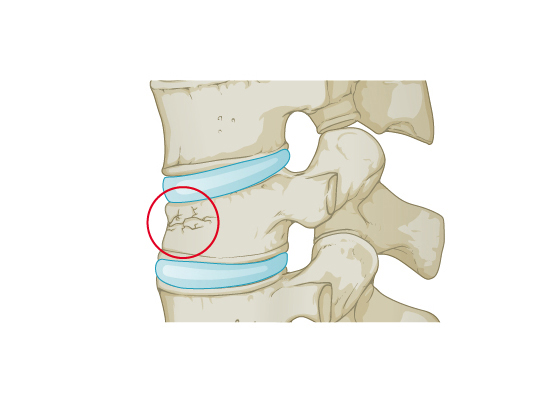
Causes and Risk Factors of Vertebral Compression Fractures
The primary causes of vertebral compression fractures include:
- Osteoporosis: In individuals with severe osteoporosis, even simple daily activities like sneezing or stepping out of the shower can cause a VCF.
- Trauma: For those with moderate osteoporosis or healthy spines, increased force or trauma, such as falling or lifting heavy objects, may lead to VCFs.
- Cancer: Metastatic tumors can weaken the vertebrae, causing them to collapse, especially in patients younger than 55 with minimal or no trauma history.
Are certain individuals more susceptible to vertebral compression fractures? Yes, the following groups are at higher risk:
- Postmenopausal women
- Older adults, particularly those over 65
- Individuals with osteoporosis
- People with a history of VCFs (5 times higher risk of subsequent fractures)
- Cancer patients, especially those with metastatic bone disease
Recognizing the Symptoms of Vertebral Compression Fractures
The main clinical symptoms of vertebral compression fractures may include:

- Sudden onset of back pain
- Increased pain intensity while standing or walking
- Decreased pain intensity while lying on the back
- Limited spinal mobility
- Gradual height loss
- Progressive deformity and disability
Do all vertebral compression fractures cause noticeable symptoms? Not always. Some VCFs may present with minor symptoms or even be asymptomatic. However, the risk of additional fractures remains, emphasizing the importance of regular check-ups and preventive measures.
Diagnostic Approaches for Vertebral Compression Fractures
While a thorough medical history and physical examination often suffice for diagnosis, imaging tests play a crucial role in confirming the condition, predicting prognosis, and determining the most appropriate treatment options. The main diagnostic tools include:
- X-rays: These provide a picture of the vertebrae structure, bone alignment, disc degeneration, and potential bony spurs.
- Computed Tomography (CT): This advanced imaging technique offers detailed views of the spinal canal, its contents, and surrounding structures.
- Magnetic Resonance Imaging (MRI): MRI scans provide high-resolution images of soft tissues, helping to identify nerve compression and other spinal abnormalities.
In some cases, a myelogram may be performed in conjunction with a CT scan. This procedure involves injecting a contrast dye near the spinal cord to enhance bone detail visibility.

When to Seek Medical Attention for Suspected Vertebral Compression Fractures
Knowing when to consult a healthcare professional is crucial for proper management of vertebral compression fractures. You should see a doctor to evaluate back pain if:
- You are older than 65 or younger than 12 years old
- Your pain remains constant, regardless of activity or rest
- You experience unintentional weight loss
- You have a history of cancer or currently have cancer
In certain situations, immediate medical attention at an emergency department is necessary. Seek urgent care if you experience any of the following symptoms in addition to back pain:
- Loss of bowel or bladder control
- Severe pain, numbness, or weakness
- High fever
Treatment Options for Vertebral Compression Fractures
The management of vertebral compression fractures typically involves a combination of conservative measures and, in some cases, surgical interventions. Treatment options may include:
- Pain Management:
- Over-the-counter pain relievers (e.g., acetaminophen, NSAIDs)
- Prescription pain medications for severe cases
- Muscle relaxants to alleviate muscle spasms
- Activity Modification:
- Short periods of bed rest (1-3 days) to manage acute pain
- Gradual return to normal activities as tolerated
- Bracing:
- Use of orthotic devices to provide support and limit spinal motion
- Typically worn for 6-12 weeks
- Physical Therapy:
- Exercises to improve strength, flexibility, and posture
- Techniques to enhance balance and reduce fall risk
- Minimally Invasive Procedures:
- Vertebroplasty: Injection of bone cement into the fractured vertebra
- Kyphoplasty: Creation of a cavity in the vertebra before cement injection
- Osteoporosis Management:
- Calcium and vitamin D supplementation
- Bisphosphonates or other bone-strengthening medications
What is the most effective treatment for vertebral compression fractures? The optimal treatment approach varies depending on the individual’s age, overall health, fracture severity, and symptoms. A multidisciplinary team of healthcare professionals can develop a personalized treatment plan to address the patient’s specific needs.

Preventing Vertebral Compression Fractures: Strategies for Bone Health
While not all vertebral compression fractures can be prevented, several strategies can help reduce the risk and maintain bone health:
- Regular Exercise: Weight-bearing and resistance exercises help strengthen bones and improve balance.
- Balanced Diet: Consuming adequate calcium and vitamin D supports bone density.
- Smoking Cessation: Quitting smoking can improve bone health and overall well-being.
- Fall Prevention: Implementing home safety measures and improving balance can reduce fall risk.
- Bone Density Screening: Regular bone density tests can help identify osteoporosis early.
- Medication Management: Proper use of osteoporosis medications as prescribed by a healthcare provider.
Can lifestyle changes significantly impact the risk of vertebral compression fractures? Absolutely. Adopting a healthy lifestyle that includes regular exercise, a balanced diet, and fall prevention measures can substantially reduce the risk of VCFs, especially in individuals with osteoporosis or those at high risk for the condition.
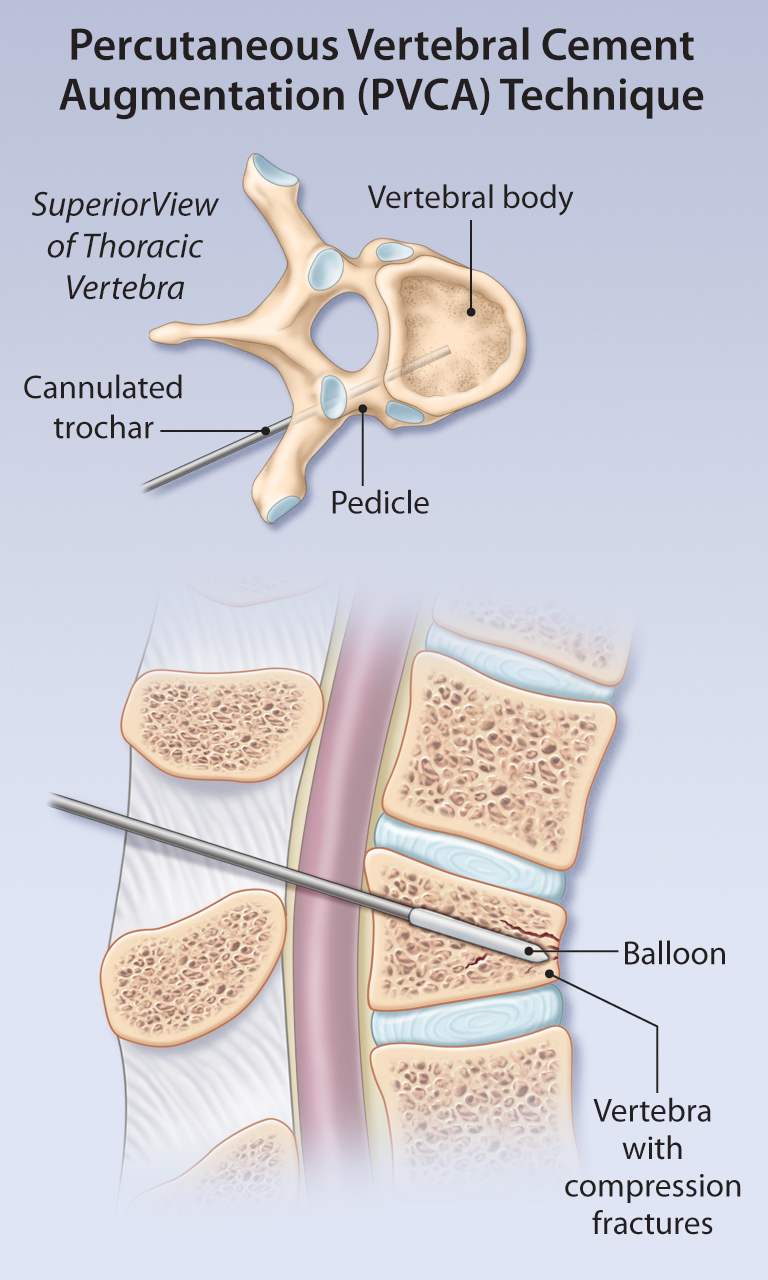
Long-term Outlook and Quality of Life After Vertebral Compression Fractures
The long-term prognosis for individuals with vertebral compression fractures varies depending on several factors, including:
- Age and overall health status
- Severity and number of fractures
- Timeliness of diagnosis and treatment
- Adherence to treatment plans and rehabilitation programs
Many patients experience significant pain relief and improved function with appropriate treatment. However, some may face ongoing challenges, such as:
- Chronic pain
- Reduced mobility
- Decreased height and postural changes
- Increased risk of future fractures
How can patients optimize their recovery and quality of life after a vertebral compression fracture? By following these steps:
- Adhering to prescribed treatment plans and medications
- Participating actively in physical therapy and rehabilitation programs
- Making necessary lifestyle modifications to support bone health
- Regularly following up with healthcare providers
- Joining support groups or seeking counseling to address emotional and psychological impacts
Emerging Treatments and Research in Vertebral Compression Fractures
The field of vertebral compression fracture management continues to evolve, with ongoing research focused on improving diagnosis, treatment, and prevention strategies. Some promising areas of investigation include:

- Advanced Imaging Techniques: Development of more sensitive and specific imaging modalities for early detection of VCFs.
- Bone-forming Agents: Research into new medications that stimulate bone formation and improve bone quality.
- Regenerative Medicine: Exploration of stem cell therapies and growth factors to enhance bone healing and regeneration.
- Minimally Invasive Surgical Techniques: Refinement of existing procedures and development of new approaches to reduce complications and improve outcomes.
- Personalized Medicine: Tailoring treatment strategies based on individual genetic profiles and risk factors.
What potential breakthroughs can we expect in the treatment of vertebral compression fractures? While it’s challenging to predict specific breakthroughs, the ongoing research in bone biology, biomaterials, and surgical techniques holds promise for more effective and personalized treatment options in the future.
The Role of Multidisciplinary Care in Managing Vertebral Compression Fractures
Effective management of vertebral compression fractures often requires a multidisciplinary approach, involving various healthcare professionals working together to provide comprehensive care. Key team members may include:
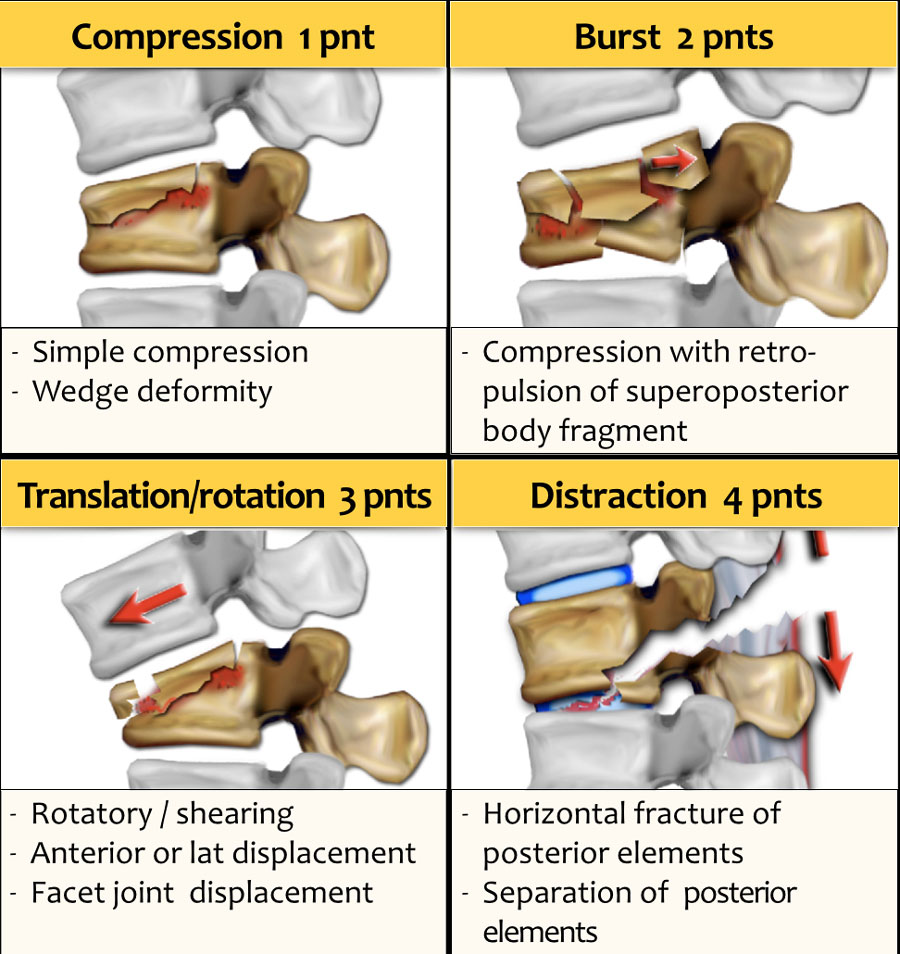
- Primary Care Physicians: Coordinating overall care and managing underlying health conditions.
- Orthopedic Surgeons or Neurosurgeons: Evaluating surgical options and performing procedures when necessary.
- Pain Management Specialists: Developing strategies for acute and chronic pain control.
- Physical Therapists: Designing and implementing rehabilitation programs to improve strength, flexibility, and function.
- Endocrinologists: Managing osteoporosis and other metabolic bone disorders.
- Nutritionists: Providing guidance on dietary interventions to support bone health.
- Occupational Therapists: Assisting with adaptations for daily activities and home modifications.
- Mental Health Professionals: Addressing psychological impacts of chronic pain and physical limitations.
How does a multidisciplinary approach benefit patients with vertebral compression fractures? By combining expertise from various specialties, this approach ensures comprehensive care that addresses all aspects of the patient’s health, from acute management to long-term prevention and quality of life improvements.
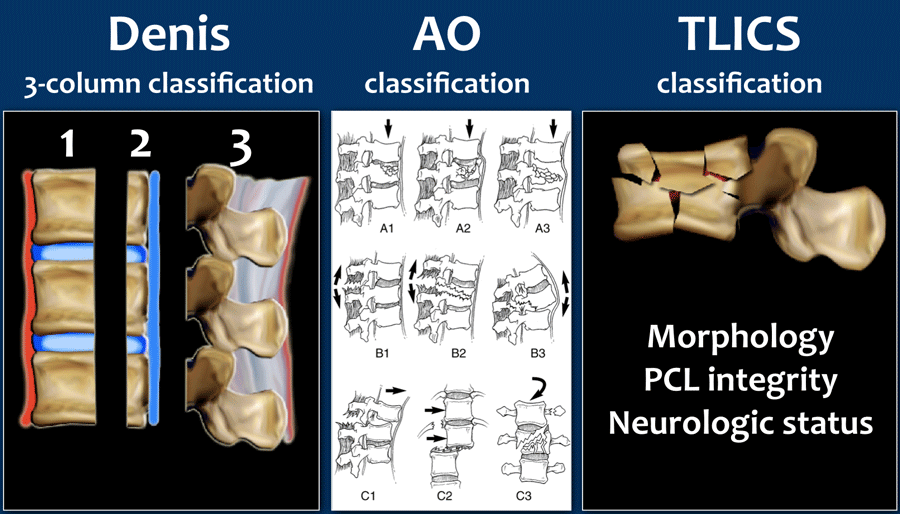
Vertebral Compression Fractures – Symptoms, Complications, Diagnosis and Treatments
| Vertebral Compression Fractures | American Association of Neurological Surgeons |
Vertebral compression fractures (VCFs) occur when the bony block or vertebral body in the spine collapses, which can lead to severe pain, deformity and loss of height. These fractures more commonly occur in the thoracic spine (the middle portion of the spine), especially in the lower part.
Causes
In people with severe osteoporosis (weak, brittle bones), a VCF may be caused by simple daily activities, such as stepping out of the shower, sneezing forcefully or lifting a light object. In people with moderate osteoporosis, it usually takes increased force or trauma, such as falling down or attempting to lift a heavy object to cause a VCF. VCFs are the most common fracture in patients with osteoporosis, affecting about 750,000 people annually. VCFs affect an estimated 25% of all postmenopausal women in the U.S. The occurrence of this condition steadily increases as people age, with an estimated 40% of women age 80 and older affected. Although far more common in women, VCFs are also a major health concern for older men.
VCFs affect an estimated 25% of all postmenopausal women in the U.S. The occurrence of this condition steadily increases as people age, with an estimated 40% of women age 80 and older affected. Although far more common in women, VCFs are also a major health concern for older men.
People who have had one osteoporotic VCF are at five times the risk of sustaining a second VCF. Occasionally, a VCF can be present with either minor symptoms or no symptoms, but the risk still exists for additional VCFs to occur.
People with healthy spines most commonly suffer a VCF through severe trauma, such as a car accident, sports injury or a hard fall.
Metastatic tumors should be considered as the cause in patients younger than 55 with no history of trauma or only minimal trauma. The bones of the spine are a common place for many types of cancers to spread. The cancer may cause destruction of part of the vertebra, weakening the bone until it collapses.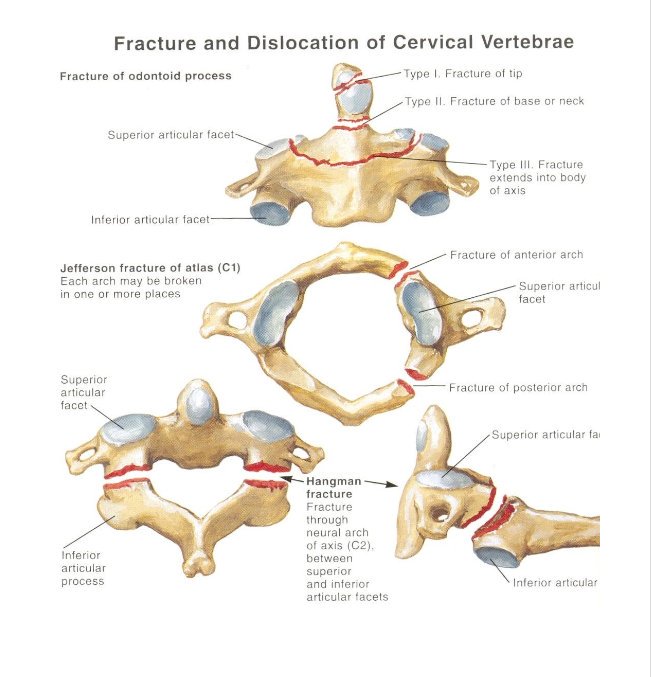
Symptoms
The main clinical symptoms of VCFs may include any of the following, alone or in combination:
- Sudden onset of back pain
- An increase of pain intensity while standing or walking
- A decrease in pain intensity while lying on the back
- Limited spinal mobility
- Eventual height loss
- Eventual deformity and disability
Fund Neurosurgical Research While You Shop
Did you know you can support education and research for conditions like vertebral compression fractures while you shop, at no extra cost to you?
Register with AmazonSmile to designate the NREF as your charity, and a percentage of your purchase is donated automatically.
sign up for free
When & How to Seek Medical Care
You should see a doctor to evaluate back pain if:
- You are older than 65 years old or younger than 12 years old
- Your pain is the same at rest as it is while active
- You have unintentional weight loss
- You have or have had cancer
You may first make an appointment with your primary care physician, or you can find a neurosurgeon using the Find a Board-certified Neurosurgeon tool on the AANS website.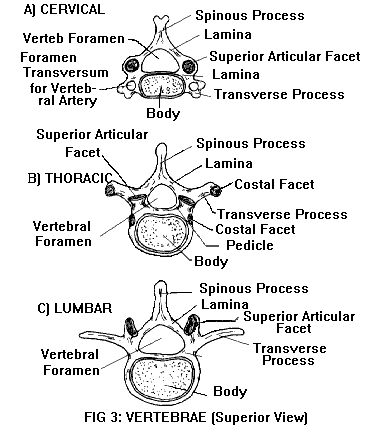
Seek immediate medical attention at an emergency department if you have any of the following symptoms in addition to back pain:
- Loss of control of your bowels and bladder
- Severe pain, numbness, or weakness
- High fever
Testing & Diagnosis
While a diagnosis can usually be made through history and a physical examination, plain x-rays, computed tomography (CT) or magnetic resonance imaging (MRI) can help in confirming diagnosis, predicting prognosis and determining the best treatment option for the patient.
- X-ray: An x-ray produces a picture of a part of the body and can show the structure of the vertebrae and the outline of the joints. It will also show bone alignment, disc degeneration and bony spurs which may irritate nerve roots.
- CT or CAT scan: A diagnostic image created after a computer reads x-rays; can show the shape and size of the spinal canal, its contents and the structures around it.
 This test may be performed in conjunction with a myelogram of the spine to provide additional information. A myelogram involves a spinal tap where dye is administered near the spinal cord. This diagnostic study is ideal for showing bone detail including narrowing.
This test may be performed in conjunction with a myelogram of the spine to provide additional information. A myelogram involves a spinal tap where dye is administered near the spinal cord. This diagnostic study is ideal for showing bone detail including narrowing. - MRI: A diagnostic test that produces 3-D images of body structures using powerful magnets and computer technology; can show the spinal cord, nerve roots and surrounding areas, as well as enlargement, degeneration and tumors.
- Dual-energy x-ray absorptiometry (DXA or DEXA) or bone densitometry: This test is the established standard for measuring bone mineral density and can determine if osteoporosis exists. The scanner painlessly and rapidly directs x-ray energy from two different sources towards the bone being examined in an alternating fashion at a set frequency. A DEXA scan can detect small changes in bone mass and is also more flexible since it can be used to examine both the spine and the extremities.
 A scan of the spine, hip or the entire body requires less than four minutes.
A scan of the spine, hip or the entire body requires less than four minutes.
Treatment
Non-Surgical Treatments
Pain secondary to acute vertebral fracture appears to be caused in part by vertebral instability (nonunion or slow-forming union) at the fracture site. VCF-related pain that is allowed to heal naturally can last as long as three months. However, the pain usually decreases significantly in a matter of days or weeks. Traditionally, people with severe pain from VCFs have been treated with reduction in activities other than those which involve caring for yourself, medications, bracing or invasive spinal surgery, often with limited effectiveness. Extended inactivity should be avoided.
Over-the-counter pain medications are often effective in relieving pain.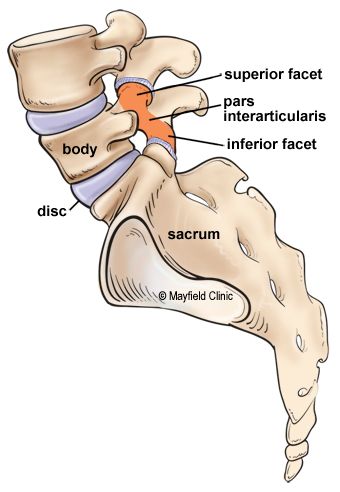 Both acetaminophen and nonsteroidal anti-inflammatory drugs (NSAIDs) are commonly recommended. Muscle relaxants and medicines for nerve/bone pain are often prescribed. Opioids should only be used for very short periods of time (1-2 weeks) for acute pain.
Both acetaminophen and nonsteroidal anti-inflammatory drugs (NSAIDs) are commonly recommended. Muscle relaxants and medicines for nerve/bone pain are often prescribed. Opioids should only be used for very short periods of time (1-2 weeks) for acute pain.
Back bracing can provide external support to limit the motion of fractured vertebrae, similar to the support a cast provides on a leg fracture. The rigid style of back brace limits spine-related motion greatly, which may help reduce pain.
While immediate treatment is essential to helping the pain and risks of the fracture, prevention of subsequent fractures is very important. Your physician may prescribe bone-strengthening drugs known as bisphosphonates (i.e.: Actonel, Boniva and Fosamax) to help stabilize or restore bone loss.
When conservative treatment options have proven ineffective, two minimally invasive procedures, called vertebroplasty and kyphoplasty, may be considered as treatment options. Recent advances in spinal procedures have reduced the need for invasive surgery in many cases.
Recent advances in spinal procedures have reduced the need for invasive surgery in many cases.
Surgery
Vertebroplasty for the treatment of VCFs was introduced in the U.S. in the early 1990s. The procedure is usually done on an outpatient basis, although some patients stay in the hospital overnight. Vertebroplasty takes from one to two hours to perform, depending on the number of vertebrae being treated. The procedure may be performed with a local anesthetic and intravenous (IV) sedation or general anesthesia. Using x-ray guidance, a small needle containing specially formulated acrylic bone cement is injected into the collapsed vertebra. The cement hardens within minutes, strengthening and stabilizing the fractured vertebra. Most experts believe that pain relief is achieved through mechanical support and stability provided by the bone cement. Kyphoplasty is a modification of this technique where a balloon is used to help guide the cement and to increase the height of the collapsed bone.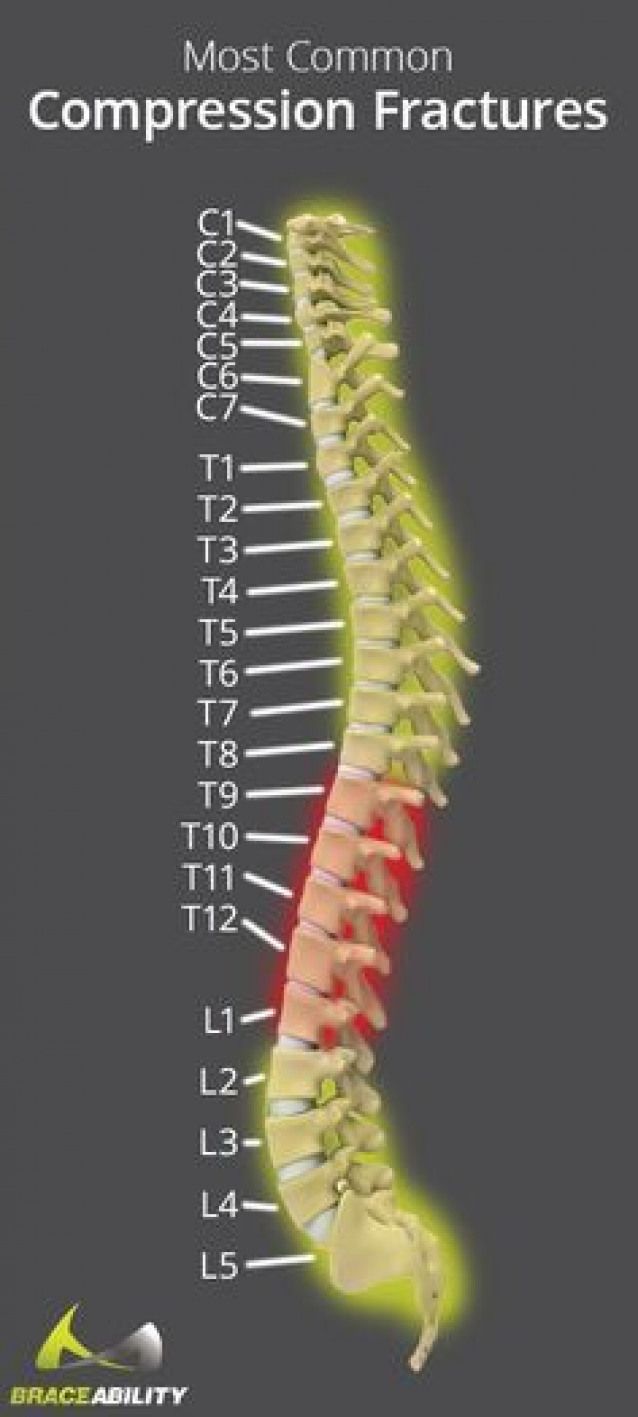 The spaces created by the balloons are then filled with the cement.
The spaces created by the balloons are then filled with the cement.
Patients with the following criteria may be considered candidates for vertebroplasty or kyphoplasty:
- Osteoporotic VCFs in any area of the spine that have been present for more than two weeks, causing moderate to severe pain and unresponsive to conservative therapy
- Painful metastases and multiple myelomas
- Painful vertebral hemangiomas (benign, malformed vascular tumors composed of newly formed blood vessels)
- Vertebral osteonecrosis (a condition resulting from poor blood supply to an area of bone, which causes bone death)
- Reinforcement of a pathologically weak vertebral body before a surgical stabilization procedure
Patients with any of the following criteria should not undergo these procedures:
- A VCF that is completely healed or is responding effectively to conservative therapy
- A VCF that has been present for more than one year
- Greater than 80-90% collapse of the vertebral body
- Spinal curvature, such as scoliosis or kyphosis, that is due to causes other than osteoporosis
- Spinal stenosis or herniated discs with nerve or spinal cord compression and loss of neurological function not associated with a VCF
- Untreated coagulopathy (a disease or condition affecting the blood’s ability to coagulate)
- Osteomyelitis (an inflammation of the bone and bone marrow, usually caused by bacterial infection)
- Discitis (nonbacterial inflammation of an intervertebral disc or disc space)
- Significant compromise of the spinal canal caused by impeding bone fragment or tumor
Complication rates for vertebroplasty and kyphoplasty have been estimated at less than 2% for osteoporotic VCFs and up to 10% for malignant tumor-related VCFs. The benefits of surgery should always be weighed carefully against its risks. Although a large percentage of patients report significant pain relief after these procedures, there is no guarantee that surgery will help every individual.
The benefits of surgery should always be weighed carefully against its risks. Although a large percentage of patients report significant pain relief after these procedures, there is no guarantee that surgery will help every individual.
Follow-up
Follow all instructions given to you by your doctor, and ask questions if you are not sure what to do.
- Take any medications as prescribed.
- Applying ice to your area of pain may help. After one week after your pain starts, either ice or heat may be applied. Apply the one that makes your injury feel better.
- Do not do painful or strenuous activities or lift heavy objects until your doctor has cleared you to do so.
- Attend all follow-up appointments to ensure you are recovering well.
Resources for More Information
Author Information
Patient Pages are authored by neurosurgical professionals, with the goal of providing useful information to the public.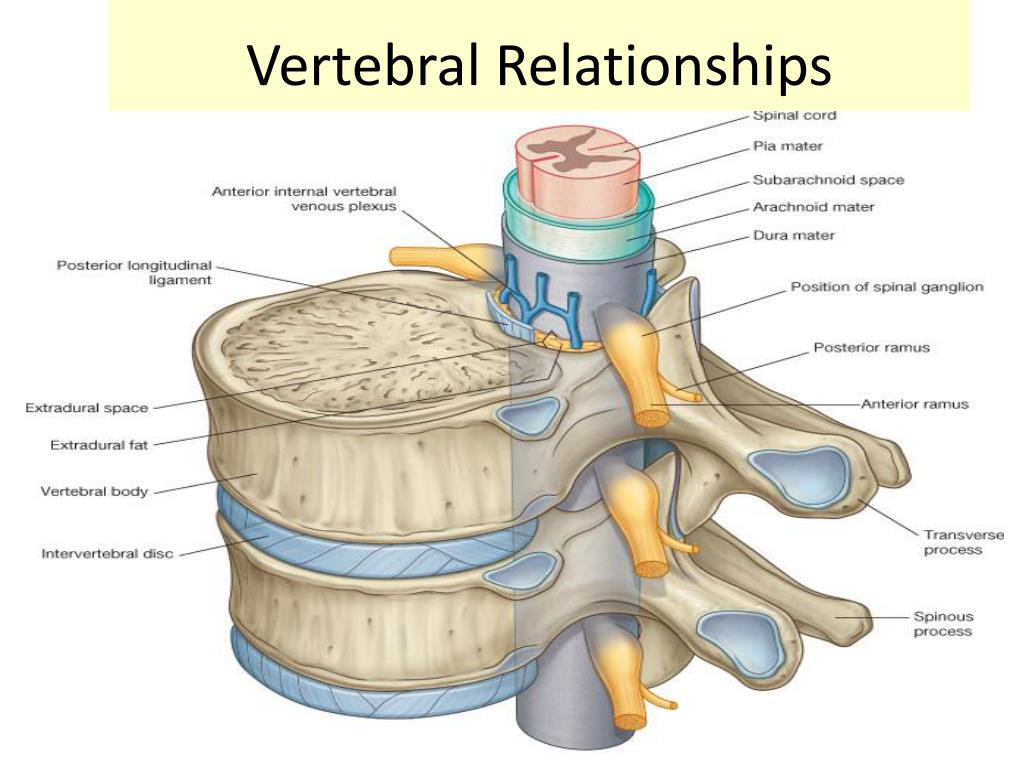
Julie G. Pilitsis, MD, PhD, FAANS, is a professor of neurosurgery and of neuroscience at Albany Medical College and chair for the department of neuroscience and experimental therapeutics. To date, she has served as chair of the AANS/CNS Section on Pain as well as chair of the AANS/CNS Section for Women in Neurosurgery. Dr. Pilitsis maintains an NIH sponsored research program focused on device optimization for neuromodulation and has published over 120 journal articles, four books and numerous chapters. She serves as functional neurosurgery section editor for Operative Neurosurgery and is on the editorial board of Neuromodulation.
Disclaimer
The AANS does not endorse any treatments, procedures, products or physicians referenced in these patient fact sheets. This information provided is an educational service and is not intended to serve as medical advice. Anyone seeking specific neurosurgical advice or assistance should consult his or her neurosurgeon, or locate one in your area through the AANS’ Find a Board-certified Neurosurgeon online tool.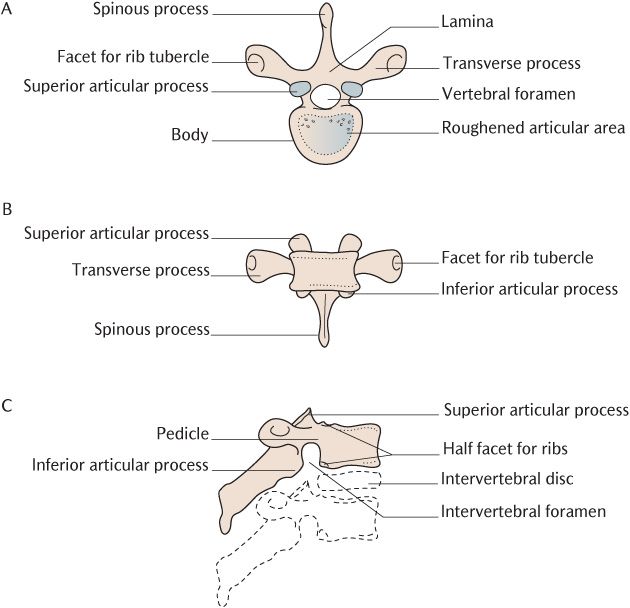
Vertebral Fracture Symptoms
Because osteoporosis is a “silent” disease, meaning that there are typically no symptoms until a fracture occurs, it is not uncommon for someone with back pain to be unaware of the fact that he or she has actually fractured a vertebra (or multiple vertebrae) in their spine.
See Signs and Complications of Osteoporosis
Typical Compression Fracture Symptoms
The main clinical symptoms of vertebral fractures typically include one or a combination of the following symptoms:
- Sudden onset of back pain
- Standing or walking will usually make the pain worse
- Lying on one’s back makes the pain less intense
- Limited spinal mobility
- Height loss
- Deformity and disability
As a general rule, a compression fracture should be suspected in any patient over the age of 50 with acute onset of back pain. For women, especially those with risk factors for osteoporosis, many physicians believe that a vertebral fracture should be suspected in any women over age 45 with sudden onset of back pain.
See Why Women Are at Greater Risk for Developing Osteoporosis
Sometimes a compression fracture in the spine may not cause any back pain or other symptoms. Therefore, even if there is not back pain, middle age or elderly persons (especially women) need to be concerned about potential fractures if there is height loss, limited ability to twist and bend the back, and/or deformity that develops in the spine.
advertisement
Typical Progression of Compression Fracture Symptoms
When osteoporosis results in a vertebral fracture, it is usually marked by the sudden onset of back pain. Most patients diagnosed with a compression fracture in the spine describe the onset of pain immediately after a fairly routine activity that slightly strains or jars the back, such as:
- Lifting – opening a window or picking up a bag of groceries
- Bending – picking something up off the floor
- Falling – jarring the spine by missing a step or slipping on ice.

In This Article:
For people with advanced osteoporosis, the fracture can even occur with extremely minor activity, such as sneezing, coughing, getting in or out of the bathtub, or simply turning over in bed.
The pain from an osteoporotic spinal fracture typically lasts about four to six weeks as the bone heals, after which most patients report that the more severe pain has subsided and has turned into more of a chronic, achy pain concentrated in the area of the back where the fracture occurred.
This pain will usually get better after a few weeks, but for some people it can continue for several months. Additionally, some patients experience back pain long after the fractured bone has healed due to changed mechanics in the back and possibly due to inactivity.
advertisement
Other Types of Fracture Pain Patterns
The above describes the course of events that is experienced by most patients with a vertebral compression fracture. However, not everyone has a typical experience. Examples of other types of pain patterns include:
Examples of other types of pain patterns include:
- If the bone collapses gradually rather than due to an activity, the pain will usually be more gradual and mild.
- Some patients with vertebral fractures report that they felt no back pain or other symptoms.
- For others, instead of pain the symptoms of deformity that start to show up after multiple fractures may be the patient’s first indication that he or she has vertebral fractures from osteoporosis.
Multiple Compression Fractures
Unlike many other conditions that can be treated before a serious complication develops, usually a fracture is the first sign that someone has osteoporosis. By the time a fracture occurs, the osteoporosis is usually advanced and the individual is then at risk for sustaining more vertebral fractures.
See Multiple Compression Fractures
Compression Fracture | Cedars-Sinai
Not what you’re looking for?
What is a compression
fracture?
A
compression fracture is a type of fracture or break in your vertebrae.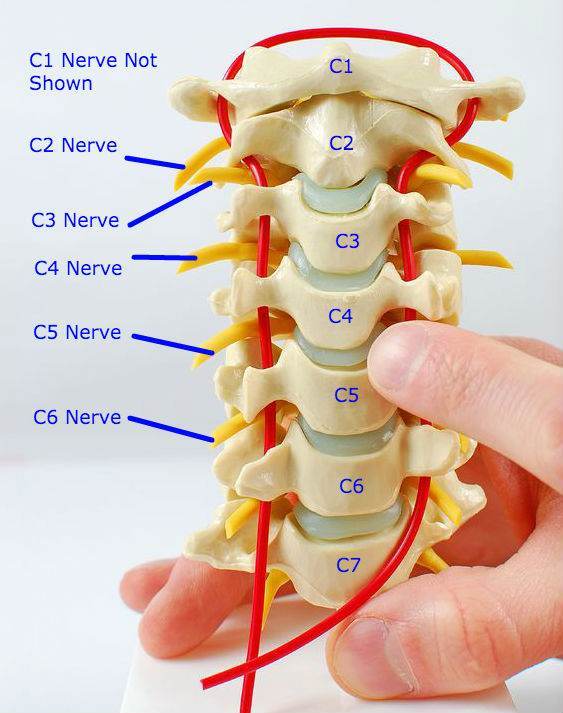 The vertebrae
The vertebrae
are
the bones in your back that are stacked on top of each other to make your spine. Your
spine supports your weight, allows you to move, and protects your spinal cord and
the
nerves that go from it to the rest of your body.
Compression fractures can cause the vertebrae to collapse, making them shorter in
height. This collapse can also cause pieces of bone to press on the spinal cord and
nerves, decreasing the amount of blood and oxygen that gets to the spinal cord.
What causes a compression
fracture?
Osteoporosis is the most common cause of compression fractures. Osteoporosis is a
type of bone loss that causes bones to break easily.
Other
causes include injuries to the spine (such as from car accidents and sports injuries)
and tumors in the spine.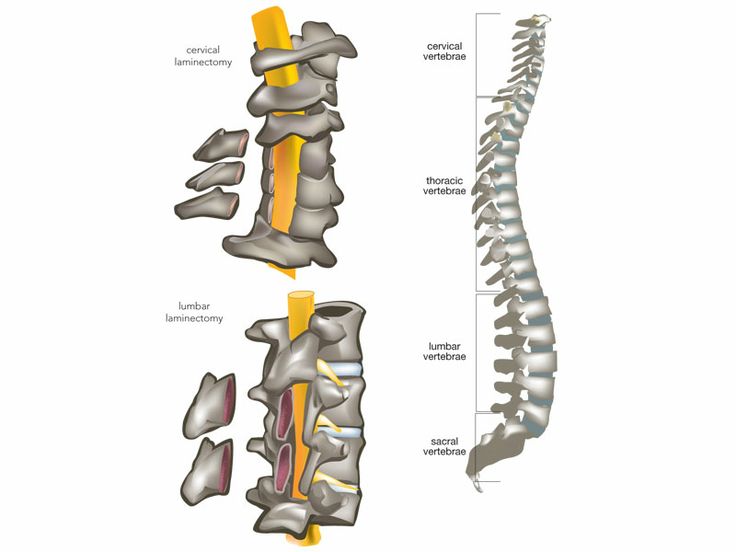 The tumor may start in the vertebrae. But more commonly it
The tumor may start in the vertebrae. But more commonly it
spreads there from another part of the body to the bone.
Who is at risk for a compression
fracture?
Osteoporosis is the most common cause of compression fractures. Preventing and treating
osteoporosis is the best way to decrease your risk for compression fractures. Most
compression fractures linked to osteoporosis are found in women, especially after
menopause. But older men develop osteoporosis and compression fractures, too.
People who have had one compression fracture related to osteoporosis are at a higher
than average risk of having another one.
What are the symptoms of a
compression fracture?
When
compression fractures first start developing, they may not cause symptoms.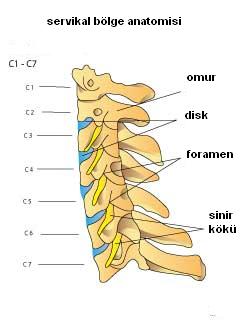 A healthcare
A healthcare
provider may discover them on an X-ray that you had done for other reasons. Later
symptoms may include:
- Slowly
worsening back pain—lying on your back may relieve the pain and standing may make
it
worse - A decrease in your height
- Limited movement in your spine (unable to bend or twist)
- A
stooped-over posture, called kyphosis. Often, the front side of the vertebra loses
height, but the rear side doesn’t. As a result, these fractures can cause your
posture to stoop forward over time. - Numbness or tingling, weak muscles, problems walking, and possible trouble controlling
your bowels or bladder because of nerve damage
If the fracture happens rapidly, you may feel sudden, severe, disabling back pain.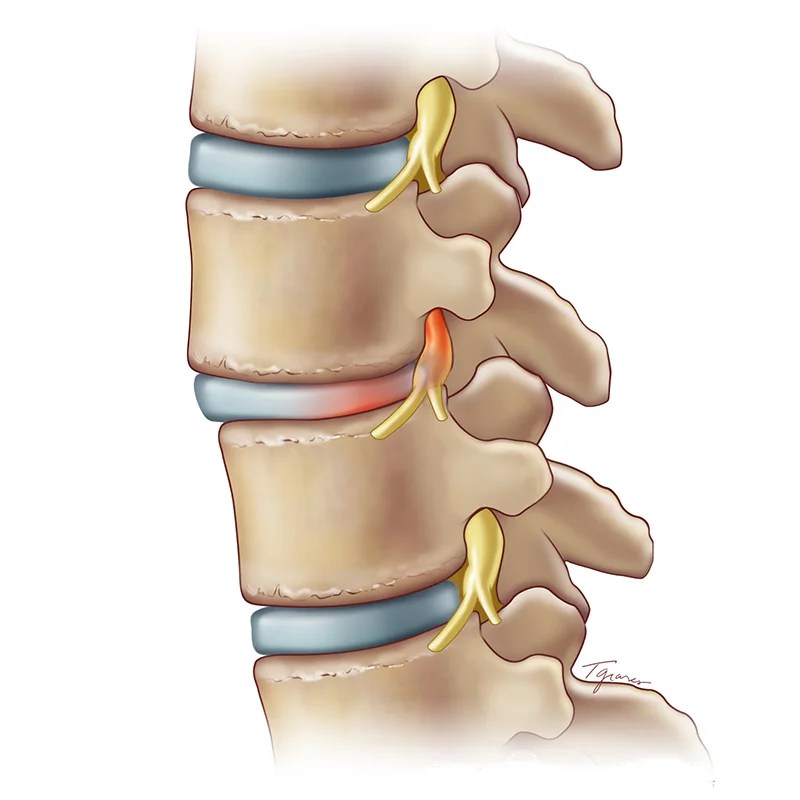
How is a compression fracture
diagnosed?
Your
healthcare provider will talk with you about your health history and recent injuries,
and do a physical exam. They will check to see where you have pain and whether your
upper spine is hunched forward. The healthcare provider may also want to get pictures
of
your spine using X-rays, CT scans, or MRI.
If
your healthcare provider suspects osteoporosis, you may need a bone density scan.
This
is a special type of X-ray called a dual-energy X-ray absorptiometry (DEXA). These
tests
show if osteoporosis is the cause of the fracture.
How is a compression fracture
treated?
If
your compression fracture is related to osteoporosis, your healthcare provider will
want
to treat the osteoporosis.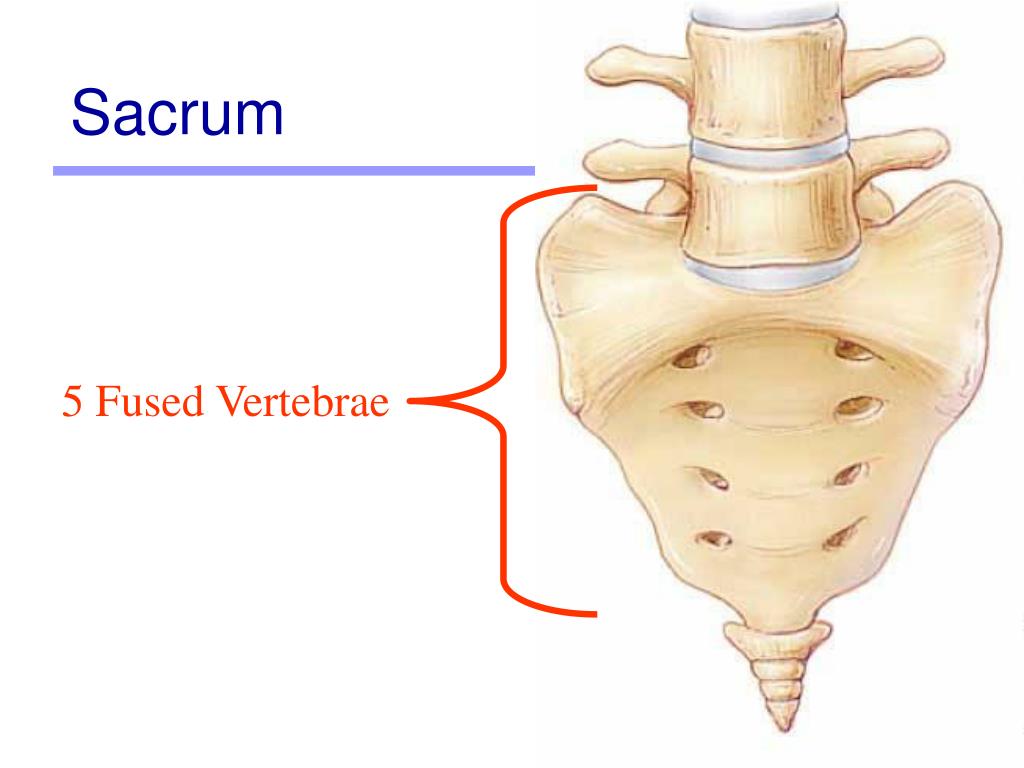 You may need to take bone-strengthening medicine and calcium
You may need to take bone-strengthening medicine and calcium
and vitamin D supplements. Physical therapy and exercises may be recommended, too.
These
things help make your bones stronger and can help prevent other fractures.
Other types of treatment include:
- Pain medicine to relieve your back pain
- Bed rest for a short time, followed by limited activity while your bones heal
- Wearing a back brace
- Physical therapy to help you move better and strengthen the muscles around your spine
Different types of surgery are available and may be needed if other treatments aren’t
helping:
- Vertebroplasty. Using an X-ray for guidance, your surgeon uses a small
needle to inject special quick-setting cement into your fractured vertebra. The
The
cement provides support for the broken vertebra, strengthens the area, and usually
results in pain relief. - Kyphoplasty. This surgery is a lot like vertebroplasty. But before the
cement is injected, small balloons are used to expand the fractured space to help
make the vertebra taller. The balloons are removed, and then the empty space is
filled with cement.
If a
cancerous tumor is causing your symptoms, you may need radiation therapy as well as
surgery to remove some of the bone and treat the tumor. If an injury has caused the
fracture, you may need surgery to repair the bone and join vertebrae together. This
is a
procedure called fusion.
What are possible complications of
a compression fracture?
Complications of compression fractures include:
- Fractured bones that do not heal after treatment, which can lead to damage of the
nearby vertebrae - Blood clots in the legs due to decreased mobility
- Kyphosis (a deformity also called dowager’s hump or humpback) that can lead to severe
pain and problems with organs in the chest (such as the heart, lungs, and digestive
organs) - Spinal cord or nerve problems
- Chronic (long-lasting) pain
What can I do to prevent a
compression fracture?
Preventing osteoporosis, or treating it if you have it, is the best way to help prevent
compression fractures. Talk with your healthcare provider about a bone density test
Talk with your healthcare provider about a bone density test
to
see if you are at risk for osteoporosis, and then find out what you can do about it.
To
reduce your risk for osteoporosis and certain types of cancer, don’t smoke and limit
alcohol use. Doing weight-bearing exercises to strengthen your muscles and bones,
and
balance exercises to reduce your risk of falling are important, too.
If you have osteoporosis and want to start an exercise program, check
with your osteoporosis specialist first. Exercise is critical to overall health. But
you
may need to not do certain exercises or change them. This depends on how severe your
osteoporosis is.
Living with a compression fracture
Compression fractures caused by osteoporosis usually become less painful with medicines
and rest. They usually heal within 3 months. But some can cause long-term problems.
They usually heal within 3 months. But some can cause long-term problems.
Medicines to treat osteoporosis can help prevent fractures in the future, but they
don’t
help heal an existing fracture. If you have osteoporosis, it’s best to treat it before
you develop any compression fractures.
In
most cases, compression fractures caused by injuries heal in about 8 weeks. But it
can
take longer if surgery is needed.
Compression fractures caused by cancer have varying outcomes depending on the type
of cancer and how well it responds to treatment.
When should I call my healthcare provider?
Call your healthcare provider if:
- You
have back pain and think you may have a compression fracture, especially if you know
you have osteoporosis, have had an injury to your back, or have cancer - Your
symptoms (such as pain, limited movement, numbness) keep getting worse - You
have trouble controlling your bladder and bowel function
Key points about a compression
fracture
- A
compression fracture is a type of fracture or break in your vertebrae (the bones that
make up your spine).
- Osteoporosis is the most common cause of compression fractures. Other causes include
injuries to the spine and tumors. - Preventing and treating osteoporosis is the best way to decrease your risk for
compression fractures. - When
compression fractures first start developing, they may not cause symptoms. - Treatment of compression fractures may include medicine, rest, a back brace, or
physical therapy. Sometimes, surgery is needed. - The risk of new fractures can be reduced by doing regular
weight-bearing exercises that increase strength, and balance exercises that reduce
the risk for falls. - If you have osteoporosis, check with your osteoporosis
specialist before starting an exercise program.
Next steps
Tips to help you get the most from a visit to your healthcare provider:
- Know the reason for your visit and what you want to happen.
- Before your visit, write down questions you want answered.
- Bring someone with you to help you ask questions and remember what your provider tells
you. - At the visit, write down the name of a new diagnosis, and any new medicines, treatments,
or tests. Also write down any new instructions your provider gives you. - Know
why a new medicine or treatment is prescribed and how it will help you. Also know
what the side effects are. - Ask if your condition can be treated in other ways.
- Know why a test or procedure is recommended and what the results could mean.

- Know what to expect if you do not take the medicine or have the test or procedure.
- If you have a follow-up appointment, write down the date, time, and purpose for that
visit. - Know how
you can contact your provider if you have questions.
Medical Reviewer: Thomas N Joseph MD
Medical Reviewer: Marianne Fraser MSN RN
Medical Reviewer: Raymond Kent Turley BSN MSN RN
© 2000-2021 The StayWell Company, LLC. All rights reserved. This information is not intended as a substitute for professional medical care. Always follow your healthcare professional’s instructions.
Not what you’re looking for?
Vertebrae (Spinal) Fractures | Diagnosis & Treatments
Spinal fracture fundamentals
Even minor falls or trauma can produce a spine fracture.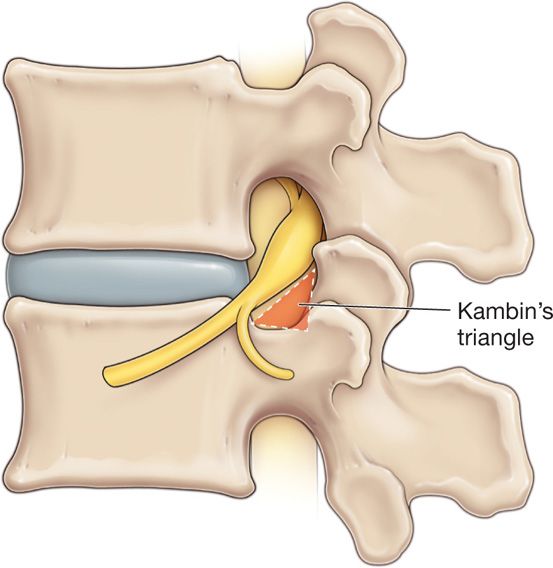 Many of these injuries will never require surgery, but major fractures can result in serious long-term problems unless treated promptly and properly. Spine fractures range from painful compression fractures, often seen after minor trauma in osteoporotic patients, to more severe injuries such as burst fractures and fracture-dislocations that occur following auto accidents or falls from height. These severe injuries frequently result in spinal instability, with a high risk of spinal cord injury and pain.
Many of these injuries will never require surgery, but major fractures can result in serious long-term problems unless treated promptly and properly. Spine fractures range from painful compression fractures, often seen after minor trauma in osteoporotic patients, to more severe injuries such as burst fractures and fracture-dislocations that occur following auto accidents or falls from height. These severe injuries frequently result in spinal instability, with a high risk of spinal cord injury and pain.
Osteoporosis, or weakening of the bones, can lead to painful vertebral compression fractures. Until recently the only treatment was bracing and narcotic medications which frequently lead to ongoing pain and progressive deformity. The spinal surgeons at Cleveland Clinic Center for Spine Health can now, using a new technology, re-expand the vertebral body (kyphoplasty) and augment its strength by injecting bone cement. This can be done as an outpatient in a minimally invasive fashion. In other cases cement injection without re-expansion of the fracture (vertebroplasty) can be performed.
In other cases cement injection without re-expansion of the fracture (vertebroplasty) can be performed.
What causes the fracture?
When an external force is applied to the spine, such as from a fall, the forces may exceed the ability of the bone within the vertebral column to support the load. This may cause the front part of the vertebral body to crush, resulting in a compression fracture. If the entire vertebral column breaks, it results in a burst fracture.
If the compression is mild, you will experience only mild pain and minimal deformity. If the compression is severe, affecting the spinal cord or nerve roots, you will experience severe pain and a hunched forward deformity (kyphosis).
Osteoporosis is the most common risk factor for fractures, as the disease causes bones to weaken.
What are my treatment options?
Medical Treatment
Most fractures are treated with immobilization in a brace or corset for up to 12 weeks. Bracing helps to reduce pain and prevent deformity.
Surgical Treatment
Severe cases may require surgery.
Vertebroplasty is a new surgical procedure that may be used to treat compression fractures. In this procedure, the surgeon inserts a catheter into the compressed vertebra. The catheter is used to inject the fractured vertebrae with bone cement, which hardens, stabilizing the vertebral column. This procedure has been shown to reduce or eliminate fracture pain, enabling a rapid return to mobility and preventing bone loss due to bed rest. However, it does not correct the spinal deformity.
Kyphoplasty involves inserting a tube into the vertebral column under X-ray guidance, followed by the insertion of an inflatable bone tamp. A tiny incision is made in the back. Once inflated, the tamp restores the vertebral body back toward its original height, while creating a cavity to be filled with bone cement. The cement seals off cracks and cavities, and prevents the vertebra from re-collapsing. After the cavity is filled, the tube is removed and the incision stitched.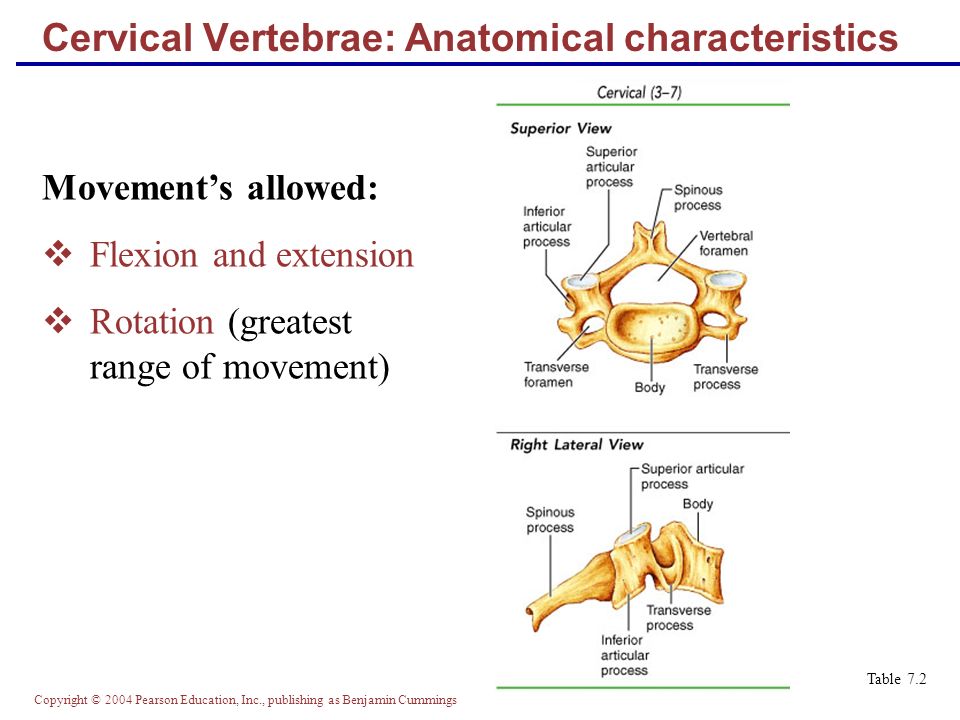 Since August 1998, hundreds patients have been treated at The Cleveland Clinic with kyphoplasty.
Since August 1998, hundreds patients have been treated at The Cleveland Clinic with kyphoplasty.
Stabilization can also be achieved by removing broken vertebra and replacing them with a plate, screws, or cage.
What are the risks of surgery? Is the surgery safe?
Risks of surgery include nerve injury, infection, bleeding, and stiffness.
How do I prepare for surgery?
Quit smoking if you smoke, exercise on a regular basis to improve your recovery rate, stop taking any non-essential medications and any herbal remedies which may react with anesthetics or other medications and ask your surgeon all the questions you may have.
What happens after surgery?
Generally, an overnight hospital stay is not required for kyphoplasty, unless you have other serious health problems, such as hypertension or a heart condition.
How long is the recovery period after surgery?
Typically, braces are worn for six to 12 weeks after surgery in addition to three to six weeks of physical therapy.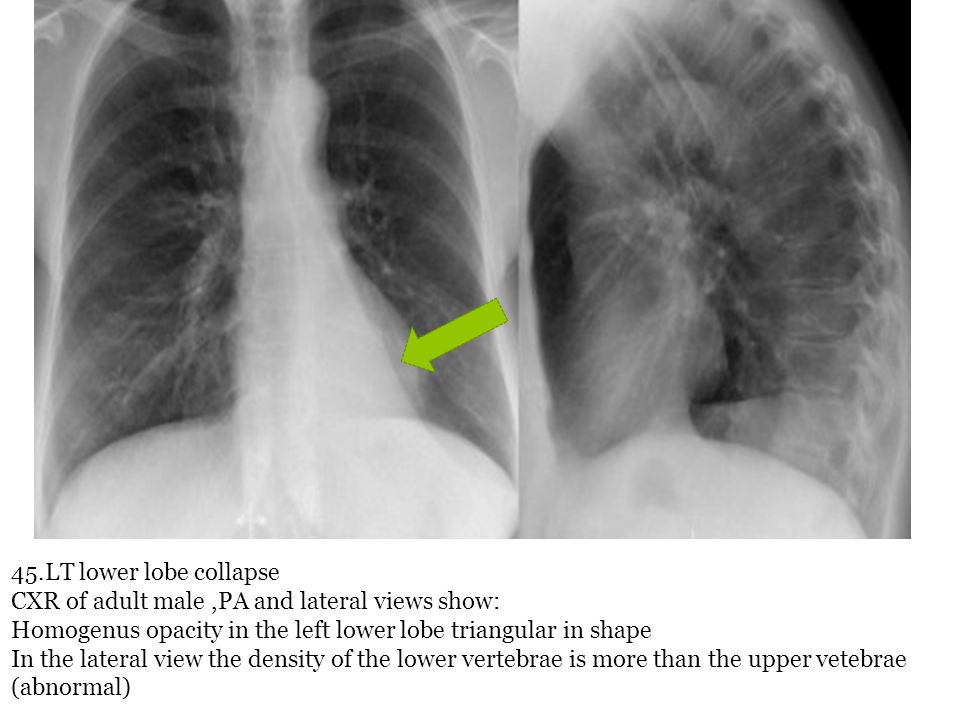
After kyphoplasty, patients are encouraged to resume normal activities as soon as possible, without any restrictions. Your doctor may recommend physical therapy and rehabilitation.
What are the CCF physician credentials?
- All doctors at Cleveland Clinic Center for Spine Health are fellowship-trained and board-certified or board-eligible in orthopaedic surgery, medical spine or neurosurgery. In addition, our surgeons have subspecialty training and years of experience in spine surgery.
- All Cleveland Clinic staff radiologists are board-certified or board-eligible in radiology or have the international equivalent.
- All Cleveland Clinic staff rehabilitation specialists are board-certified or board-eligible in physical medicine and rehabilitation, or have the international equivalent.
- All Cleveland Clinic staff pain management specialists are board-certified or board-eligible in pain management or have the international equivalent.
How do I make an appointment?
Call 216.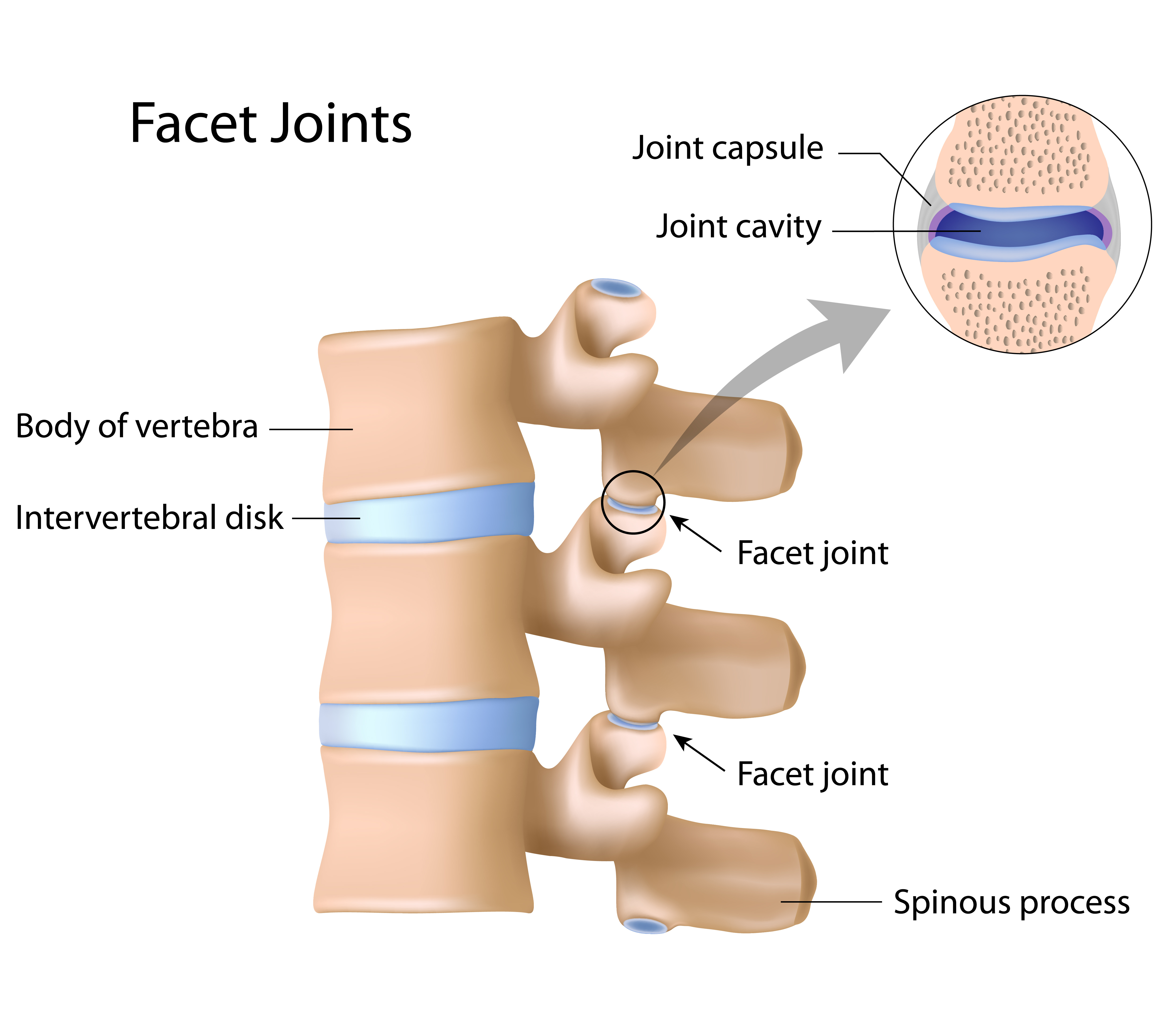 444.BACK (2225) or toll free 800.223.2273, ext. 42225, Monday through Friday, 8:00 a.m. to 5:00 p.m. (Eastern Standard Time).
444.BACK (2225) or toll free 800.223.2273, ext. 42225, Monday through Friday, 8:00 a.m. to 5:00 p.m. (Eastern Standard Time).
What clinical trials are being conducted at CCF on the procedure?
Researchers at the Cleveland Clinic are involved in ongoing studies that investigate new drugs and treatment approaches for managing disease. Participants in these clinical trials can play a more active role in their own health care, gain access to new research treatments before they are widely available, and help others by contributing to medical research. There are currently more than 1,700 active clinical studies underway.
Are there other resources that I can go to for more information on the procedure?
Patients can go to the following resources for more information on this procedure:
Why should I seek a second opinion regarding treatment for this procedure?
As modern medical care grows more complex, patients can feel overwhelmed. The opportunity to consult a recognized authority about a particular diagnosis and treatment can bring peace of mind at an emotionally difficult time. A second opinion may be beneficial when:
A second opinion may be beneficial when:
- You are uncertain about having surgery.
- You still have questions or concerns about your current treatment.
- A controversial or experimental treatment is recommended.
- You have multiple medical problems.
- You have choices to make about treatment.
A convenient way to obtain a second opinion is e-Cleveland Clinic, a contemporary adaptation of The Cleveland Clinic’s 80-year tradition as a nationally designated referral center. An easy-to-use, secure, from-home second opinion service, e-Cleveland Clinic utilizes sophisticated Internet technology to make the skills of some of our specialists available to patients and their physicians, anytime, anywhere. With e-Cleveland Clinic’s personalized access, no patient need ever to feel unsure or uninformed when faced with what could potentially be one of the most important decisions of their life. Learn more about e-Cleveland Clinic.
Spinal Compression Fracture Treatments | Nura Pain Clinic
Pain symptoms associated with compression fractures are variable for each patient and depend on how and why the compression fracture occurred.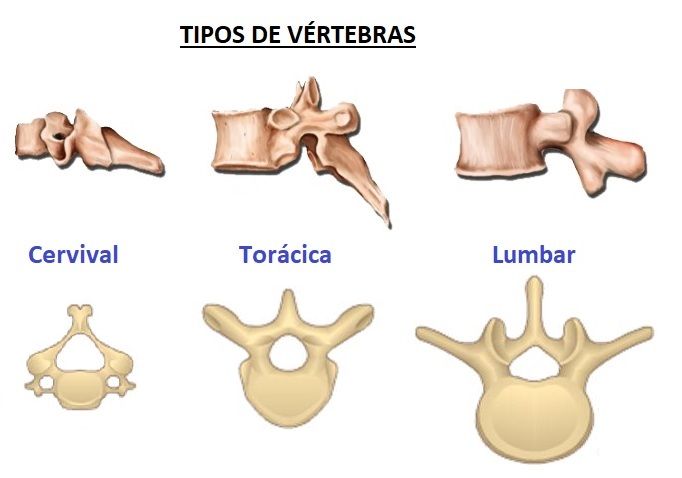 Multiple treatment options are available at Nura Pain Clinics.
Multiple treatment options are available at Nura Pain Clinics.
Book Evaluation Appointment
Compression Fracture Treatments
Treatment for the compression (vertebral) fracture may include pain medicine, back brace, and physical therapy for supporting and strengthening the back. In cases of osteoporosis, medications and calcium supplements can help prevent further fractures by strengthening bone.
Surgery may also be recommended. The two most common types of surgery for this type of fracture are vertebroplasty and kyphoplasty. Both types of surgery provide pain relief from compression fractures and can help the fracture heal.
Vertebroplasty
This minimally invasive treatment is designed to help reduce or eliminate pain caused by a fractured vertebra and stabilize the bone. Low viscosity cement is injected directly into the collapsed vertebral body under high pressure, with the goal of stabilizing the fracture and relieving the associated back pain.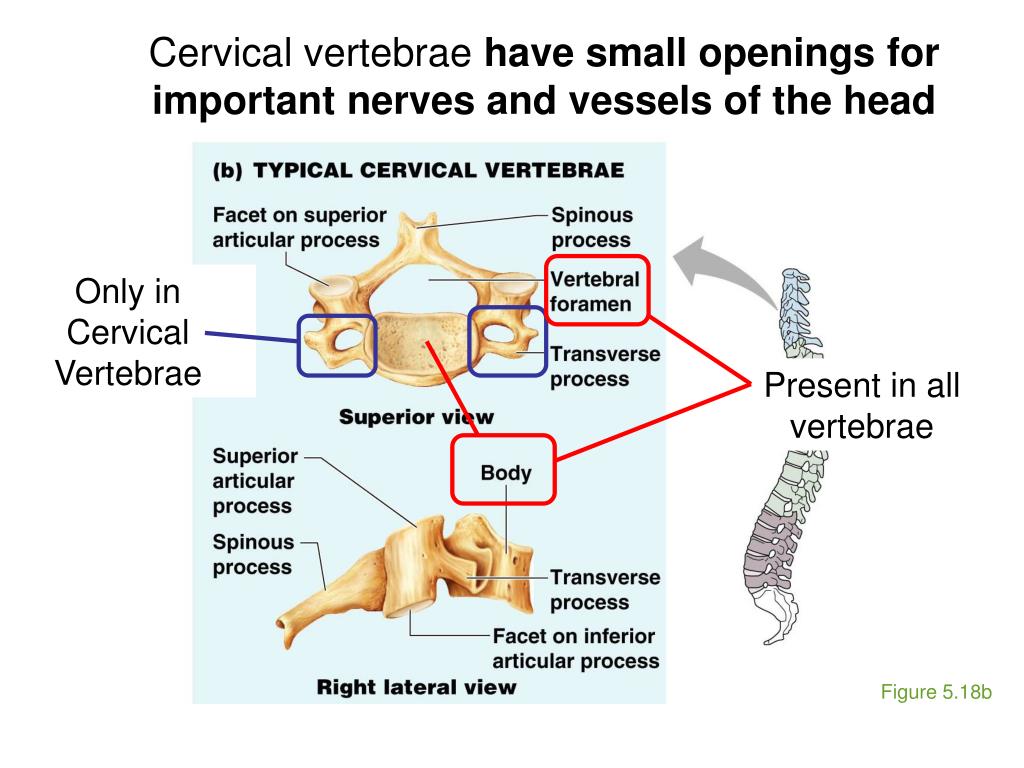 Vertebroplasty Benefits and Video
Vertebroplasty Benefits and Video
Kyphoplasty
Similar to vertebroplasty, kyphoplasty is a minimally invasive procedure designed to reduce or stop the pain caused by a spinal fracture, to stabilize the bone, and to restore some or all of the lost vertebral body height due to the compression fracture. Kyphoplasty Benefits and Video
Compression Fracture Pain Symptoms
One or more of the following pain symptoms may indicate a compression fracture and be an indication that you should seek compression fracture pain relief:
- Sudden, severe back pain that may or may not be associated with trauma.
- Worsening pain when standing or walking or with activity.
- Pain may be relieved with rest or lying down.
- Pain associated or increased with bending or twisting motion.
- Height loss. More noticeable with multiple level compression fractures. With each level of vertebral collapse, the shorter stature becomes more noticeable.
- Deformity of the spine.
 Usually seen as a curve or “hunchback” shape in the back, termed kyphosis.
Usually seen as a curve or “hunchback” shape in the back, termed kyphosis. - Abdominal pain. This can be caused by the shorter spine putting pressure on the stomach leading to stomach and digestive issues such as loss of appetite, constipation and weight loss.
- Breathing difficulty due to severe spinal compression causing the lung to not function properly.
Compression Fracture Pain Causes
The spine is made up of many strong bone segments, from the neck to the low back, called vertebrae. Compression fractures in the spine occur when there is a collapse of one or more of these vertebrae.
These compression fractures in the spine can be caused by injury, such as a hard fall, but often occur in patients with arthritis or osteoporosis.
In more rare instances, a compression fracture could be caused by a tumor in the spine. The cancer weakens bone supportive structures causing destruction of parts of the vertebra and eventual collapse.
Compression Fracture Risk Factors
Almost two-thirds of spinal compression fractures are never diagnosed because many patients think their back pain is merely a sign of aging and arthritis and not compression fracture pain.
Women with osteoporosis and older individuals tend to have less bone density and are at an increased risk of compression fractures. Osteoporosis thins the bones making them become weak and unable to bear the normal weight and pressures of daily activities. The simple motion of bending forward may be enough to cause a fracture in these weakened vertebrae.
Approximately 40 percent of all women will have at least one spinal compression fracture by the time they turn 80 years old, making it the most common type of fracture seen with osteoporosis.
It is important that patients with sudden, severe back pain, especially women over the age of 50, seek medical care right away. Treatment in these circumstances can reduce the chance of further compression fractures.
Testing
A physical exam will reveal tenderness over the affected area. Further testing using imaging studies such as a spinal x-ray can show a compressed or shortened vertebra. A compression fracture can be diagnosed by comparing the vertebrae with other vertebrae to see if it appears “compressed” or shorter. If there is concern that the compression fracture was caused by a tumor or severe trauma, a CT or MRI scan may be necessary, as well. In certain circumstances, if there is suspicion that the spinal cord may be injured, a myelogram may also be performed in addition to a thorough neurological exam, to determine possible spinal cord damage.
If there is concern that the compression fracture was caused by a tumor or severe trauma, a CT or MRI scan may be necessary, as well. In certain circumstances, if there is suspicion that the spinal cord may be injured, a myelogram may also be performed in addition to a thorough neurological exam, to determine possible spinal cord damage.
back to Back and Neck Pain
view Treatments We Offer
Pain Associated with Osteoporosis and Vertebral Compression Fractures
Healthy bones can support quite a bit of pressure, but when vertebrae become soft or weakened by osteoporosis, they can fracture easily. Osteoporosis causes bones to lose their density and become very brittle. Fractures can happen even from simple movements that don’t seem dangerous. Osteoporosis is the most frequent cause of a vertebral compression fracture and its subsequent pain.
Osteoporosis Symptoms
Not everyone with a vertebral compression fracture experiences the same symptoms. Sometimes patients only experience minimal or mild pain.
Sometimes patients only experience minimal or mild pain.
The most common symptoms of osteoporosis and vertebral compression fractures include:
- A curved or hunched spine called kyphosis or a “dowager’s hump”
- Loss of height
- Back fatigue, due to excess muscle strain used to hold up the spine
- Leg weakness
- Bladder or bowel incontinence
- Sudden, severe back pain that radiates around the waist and gets worse when you are standing or walking with some relief when you lie down
- Difficulty twisting or bending your body, difficulty getting out of bed
Treatments
Most vertebral fractures will heal after weeks of rest, over-the-counter pain medication, and a gradual increase in activity. The pain should subside as the bone begins to repair itself.
However, for some people, osteoporosis pain can last longer, and other therapies may be necessary. These include:
- Prescription medications for pain
- Bracing to stabilize the spine and reduce pain
- Physical therapy to strengthen the core muscles surrounding the spine and encourage newer, pain-free ways of moving
- Antidepressant medication to help deal with chronic pain
- Biofeedback to learn relaxation skills and ease pain
If medication, physical therapy, rest, or other techniques don’t work for your pain, your doctor may recommend surgery. See Surgery for Spinal Compression Fractures for more details about these surgical procedures.
See Surgery for Spinal Compression Fractures for more details about these surgical procedures.
Why Choose Weill Cornell Medicine for Osteoporosis Pain?
The expert physicians at the Weill Cornell Medicine Division of Pain Management work closely with a broad team of specialists to help our patients suffering from pain associated with osteoporosis and vertebral compression fractures. Our focus is on helping our patients regain independence, functionality, and improve quality of life.
Our specialists take a multi-disciplinary, patient-centered approach to care. After assessing your case, we will tailor a treatment plan that may include medication, pain management, and physical therapy. When surgery is part of the plan, we offer the most advanced minimally invasive techniques.
Weill Cornell Medicine often offers clinical trials as well, giving patients access to treatments that may not be available elsewhere. Learn more about Pain Management’s current clinical trials.
The Center for Comprehensive Spine Care is made up of Neurology, Pain Management, Neurosurgery, Physiatry, Radiology, and Psychology — providing personalized, precision medicine. We employ some of the most sought-after vertebral compression fracture doctors in New York City.
Learn more about the conditions we treat and the services we offer and contact us today to schedule a consultation.
13 Vertebral Compression Fracture Symptoms To Watch For
When 80% of people in the U.S. suffer from a sore back at some point in their lives, it can be easy to dismiss that pain as just a minor nuisance. If you can still move around and it’s not that bad, it must not be serious, right? In some cases, aches and pains are the result of age or maybe a vigorous weekend of physical activity. In the case of compression fracture symptoms, though, they might start mild and get worse if left untreated. Here’s how to know the difference.
What is a compression fracture?
Our spinal column consists of 33 vertebrae in four sections:
- Cervical spine (neck)
- Thoracic spine (middle/upper back)
- Lumbar spine (lower back)
- Sacrum (base of the spine/tailbone)
The vertebrae in each of these sections are connected to the neighboring vertebra above and below, stabilized by connective tissue, and further supported by the muscles of the back.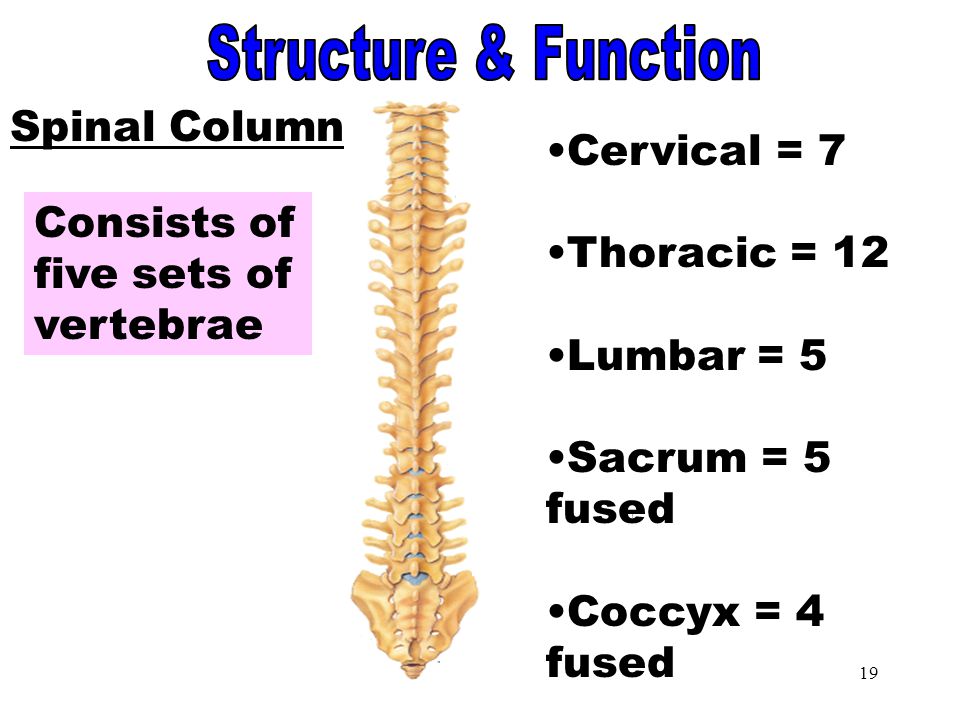 Movement is assisted by facet joints and eased by intervertebral discs.
Movement is assisted by facet joints and eased by intervertebral discs.
This whole structure works beautifully—until it doesn’t. Vertebral compression fractures are small cracks or breaks in one or more vertebra. These fractures can occur anywhere along the spine but are most commonly found in the thoracic spine. This area of the spine includes the ribcage and is more rigid to protect sensitive vital organs. This same rigid protection means fractures are more likely.
Vertebral compression fracture causes
The bones of your spine are strong. The support systems within the spine that allow for both stability and movement contribute to that strength. But bones can weaken over time, especially when osteoporosis is present. Osteoporosis affects mostly women over the age of 55. Age thins and softens the bones. In severe osteoporosis, even a cough or sneeze can cause a vertebral compression fracture.
Vertebral compression fracture causes aren’t restricted to older adults, though.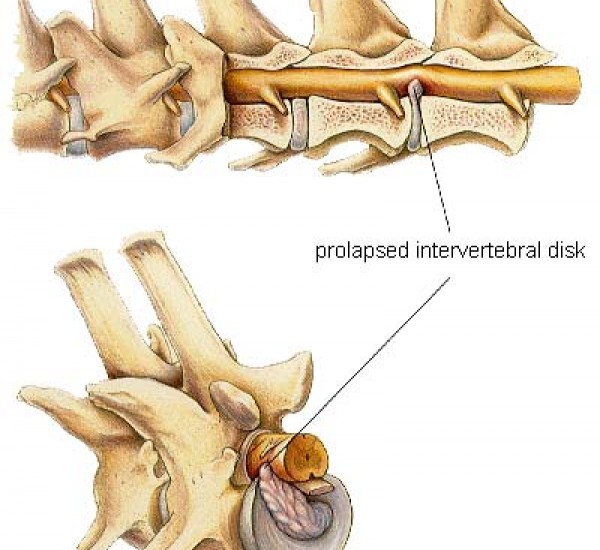 This type of injury can occur in full-contact sports, in car accidents, or with any other sudden trauma to an otherwise healthy back. And that can happen at any age and regardless of gender.
This type of injury can occur in full-contact sports, in car accidents, or with any other sudden trauma to an otherwise healthy back. And that can happen at any age and regardless of gender.
Another serious, but rare, cause of vertebral compression fracture is metastatic tumors. Cancer that spreads to the spine may cause breaks or cracks in the spine in patients under 55.
Types of compression fractures
There are three main types of compression fractures:
- Wedge: This is the most common type of fracture. The front of the vertebra cracks, but the back remains intact. This forms a wedge shape that can lead to permanent spinal deformity (i.e. kyphosis). A wedge fracture is mechanically stable, and the spine is still able to function.
- Crush: When the vertebrae crashes down evenly, this is referred to as a crush compression fracture. As with the wedge, a crush fracture can still function well, if painfully.

- Burst: Of the three types of compression fractures, a burst is the most serious and unstable. The vertebra shatters and sends pieces of bone in all directions, even towards the spinal cord. This is considered an emergency situation that requires immediate medical attention.
It’s important to note that stable compression fractures may not cause additional damage. Unstable fractures require treatment to prevent more serious vertebral compression fracture symptoms from occurring.
What does a compression fracture feel like?
Compression fractures range in effects from a minor to an excruciating pain.
Some people don’t have any vertebral compression fracture symptoms at all. They don’t even know they have one until another medical issue sends them to the doctor. For others, the pain is immediate and debilitating. Sharp, stabbing pain is characteristic of a vertebral compression fracture caused by sudden injury or trauma.
13 common vertebral compression fracture symptoms
As noted above, some people experience no vertebral compression fracture symptoms at all. This is most common when the fracture occurs in the early stages of osteoporosis.
Usually, pain will begin mildly after a minor event (e.g. lifting something heavy, bending and twisting at the same time, or jarring the spine). Symptoms from fractures due to osteoporosis may actually heal by themselves. Pain persists for about four to six weeks and can be managed with comfort measures.
Sometimes this pain becomes a dull ache right around the area of the fracture. Again, for many people, this pain will gradually subside over a period of weeks or months.
Others might find that their pain becomes chronic. This occurs for a couple reasons.
The injured person might have unconsciously changed how they walk or sit to relieve the pain in their back, or the healed bone may have changed the way it is sitting in the spine.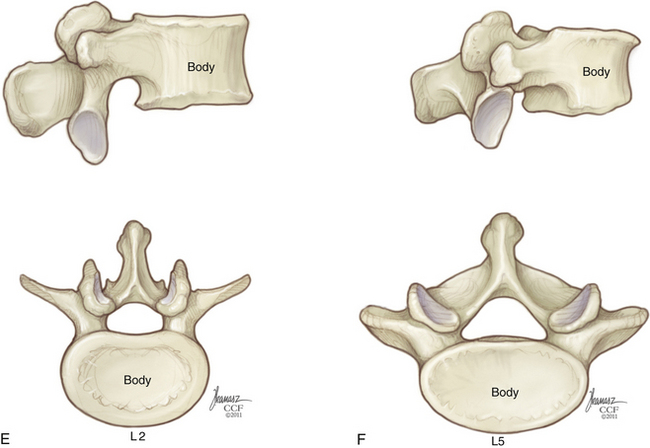 Inactivity while the bone heals may also cause chronic pain as the body tightens up.
Inactivity while the bone heals may also cause chronic pain as the body tightens up.
Regardless of the progression, here are 13 common vertebral compression fracture symptoms to look for. Note that not all who have vertebral compression fractures will experience the most severe symptoms, but it’s good to know what to look out for.
1. Sudden, sharp pain
A sudden sharp pain in the back is one of the first signs of a vertebral compression fracture. This may be a fleeting sensation after a jarring step. It might occur if you fall or sit down too suddenly. For some people, the pain is quick and brief. Others might experience a sharp pain that lingers.
2. Slight pain that gradually gets worse
Not all pain from compression fractures is sharp and sudden. Some people experience a mild onset that gradually worsens over time.
3. Pain that decreases when you lie down
Unlike sciatica (see below), you may experience pain relief when you lie down. This takes the pressure off the spine (and any compressed nerves).
This takes the pressure off the spine (and any compressed nerves).
4. Difficulty moving
A compromised spine may result in compromised movement. You may find yourself struggling to twist, bend, or stoop.
5. Pain in the back, arms, or legs
Some people report pain in the area of the fracture only. Others experience pain in the back, arms, or legs. Where pain is located depends on the fracture itself and other factors, including overall health or other underlying conditions.
6. Peripheral nerve pain
Peripheral nerve pain is pain that occurs in the extremities. People with diabetes are highly susceptible to peripheral nerve pain, but it can also occur in vertebral compression fractures.
7. Sciatica
Sciatica is the term for pain that occurs anywhere along the length of the sciatic nerve. If the vertebral compression fracture occurs in the lumbar spine, there is a possibility you will feel symptoms of sciatic pain. These include:
These include:
- Numbness in the legs and feet
- Buzzing or tingling sensation in the legs and feet (“pins and needles”)
- Burning or aching pain
- Pain that increases the longer you stay in one positions (sitting or standing)
- Tightness in the calf or hamstring
- Weakness in the legs
Sciatica is most commonly felt on one side of the body.
8. Spinal changes
In the later stages of thoracic compression fracture symptoms, you may notice changes to the spine. Instead of sloping slightly forward and up at the base of the neck, a thoracic compression fracture causes the spine to bulge outward. This may start as a mild bump and grow steadily worse without treatment.
9. Height loss
You may notice a loss of height over time, especially in the case of multiple fractures. Any one of the three types of vertebral compression fractures can cause a loss of height.
10. Tummy troubles
Tummy troubles
Another sign of multiple compression fractures is stomach issues. When your spine shortens, you may experience digestive issues such as constipation and low appetite.
11. Pain in the hips
Shortened spines bring the ribcage in close contact with the hips. If enough vertebrae are compromised, this might result in the ribcage actually touching the hip bones, rubbing and causing pain.
12. Difficulty breathing
Perhaps the most distressing of the vertebral compression fracture symptoms is also, thankfully, one of the least common. When multiple vertebrae are fractured, your lungs have less room for proper function. This may cause trouble breathing.
13. Loss of bowel or bladder control
This rare but serious compression fracture symptom requires immediate medical attention. Head straight to your nearest medical facility.
Are there compression fracture treatments that can help?
Compression fracture treatments for mild fractures are much different than treatments for compression fractures with the potential for serious damage.
The first and best treatment is prevention. Since many compression fractures can be traced to weak or thinned bones, preventing osteoporosis through diet and exercise is the best line of defense.
If you do experience minor pain associated with your compression fracture, non-steroidal anti-inflammatory drugs (NSAIDs) offer relief from pain and inflammation. A back brace can also help support your back as it heals.
With minor pain under control and a brace for support, physical therapy is your next option for compression fracture treatments. These strengthening exercises do not heal the fracture but provide support and strength to prevent further damage (and future fractures).
Some patients also find considerable relief using acupuncture for back pain. The treatment may be ancient, but modern support for it is growing.
If pain persists, or the threat of serious damage is possible, surgery may be an option. The two major types of vertebral compression fracture surgeries—vertebroplasty and kyphoplasty—are similar. Both surgeries increase the height between the collapsed vertebrae: vertebroplasty uses acrylic cement injected between the vertebrae; kyphoplasty uses a small balloon, inflated, to make space. Both of these procedures protect the structure of the spine while reducing back pain symptoms.
Both surgeries increase the height between the collapsed vertebrae: vertebroplasty uses acrylic cement injected between the vertebrae; kyphoplasty uses a small balloon, inflated, to make space. Both of these procedures protect the structure of the spine while reducing back pain symptoms.
Another surgery, spinal disc decompression, may remove loose bone material or any disc material if the intervertebral disc has ruptured due to a fracture.
Except in emergency cases, surgery is generally only considered when other more conservative options have failed. Talk to your doctor about all of your options.
Get help
Back pain might be common, but it doesn’t have to be chronic. If you are suffering from compression fracture symptoms, it’s time to find help.
The pain specialists at Arizona Pain are committed to helping you get your life back. We offer comprehensive, personalized treatment plans for compression fracture symptoms. Get in touch to schedule your first appointment today!
Get Free Email Updates!
Weekly updates on conditions, treatments, and pain medicine.
Thank you for subscribing.
Something went wrong.
No Spam. Unsubscribe anytime.
Diagnosis of degenerative disc disease – HealthInfo
Symptoms of degenerative disc disease
- Degenerative disc disease can manifest itself as pain in the back or neck, however, different people have different symptoms. Many do not feel any pain, while others suffer from acute pain limiting activity. The areas in which pain occurs depend on the location of the affected disc.If the affected disc is in the cervical region, pain may occur in the neck or arm. Back, buttock, or leg pain occurs when a disc in the lumbar region is affected. Pain often worsens with movement, such as bending or stretching.

- Pain may occur after severe injury or normal movement (bending). In addition, the pain sensation can progress over time.
- In some cases, numbness or tingling in the hands or feet may occur.
General symptoms of osteochondrosis of intervertebral discs
- The pain in the lower back increases in the sitting position.
- Lower back pain worsens with bending, lifting and twisting of the trunk.
- Lower back pain is relieved by walking and running.
- Lower back pain is relieved by rapid changes in body positions. The pain practically disappears while lying down.
Types of pain in osteochondrosis of intervertebral discs
Most patients with osteochondrosis have chronic back pain and episodes of acute low back pain.It is assumed that the cause of acute pain is pathological micromovements of the intervertebral disc, which has signs of degeneration.
The compensatory reaction of the body to back pain is muscle spasm: this is how the body tries to stabilize the spine and reduce the volume of micromovements of the intervertebral disc. It should be noted that muscle spasm sharply reduces the motor activity of patients.
It should be noted that muscle spasm sharply reduces the motor activity of patients.
The duration of pain attacks ranges from several days to several months, after which acute pain is replaced by chronic pain.The intensity of chronic pain ranges from minor discomfort to persistent pain that limits the patient’s physical activity, which, fortunately, is quite rare.
In addition to lower back pain, patients may experience pain, numbness, and tingling in the legs. Even in the absence of compression of the nerve root, pain can radiate to the legs, but, as a rule, it does not go below the knee. Numbness and tingling is associated with the effects on the nerves of proteins that activate inflammation.
Such unpleasant sensations are not signs of damage to the nerve root, while the appearance of weakness in the legs (for example, drooping of the foot) is a reliable sign of a pathological process.
Chronic and acute pain
A characteristic feature of chronic pain is the disparity between the intensity and prevalence of pain and tissue damage.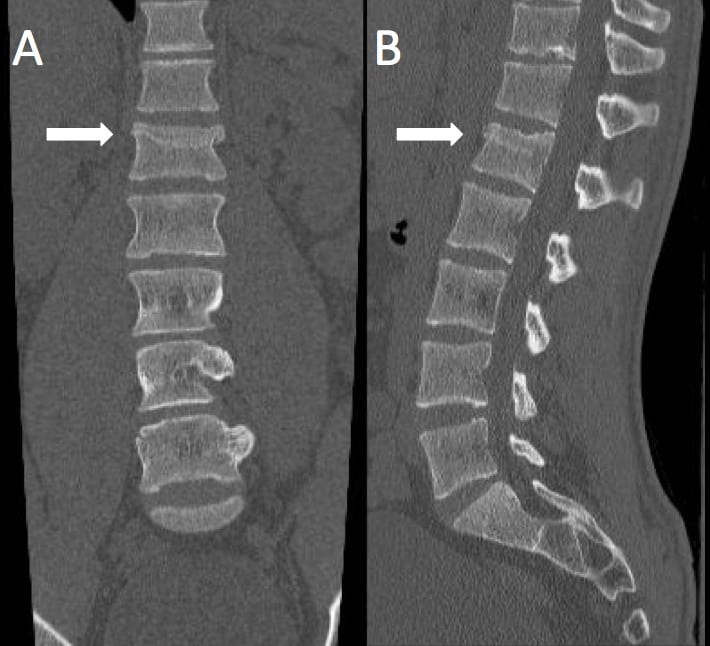 Severe degeneration of the intervertebral discs can be pain-free, and, conversely, small degenerative changes can lead to severe pain.
Severe degeneration of the intervertebral discs can be pain-free, and, conversely, small degenerative changes can lead to severe pain.
Chronic pain differs significantly from acute pain: the intensity of acute pain exactly matches the degree of tissue damage. Acute pain elicits a protective reflex response, such as when the hand is pulled away from a hot object. There is no reflex response in chronic pain, and the presence of chronic pain does not indicate progression of tissue damage.
Degenerative disc disease is diagnosed after a medical history and physical examination.The doctor assesses the symptoms, injuries or diseases, previous treatment, habits, occupations that can cause pain in the neck, arms, back, buttocks or legs. When performing a physical examination, a physician.
- will check the range of motion in the affected area and the pain that occurs during movement
- will reveal painful areas on palpation and other changes in the nervous system, such as numbness, tingling or weakness in the affected area or changes in reflexes
- will reveal the presence of other health problems such as fractures, tumors, and infections.

Unless the physician detects any major abnormalities during the initial examination, other imaging procedures, such as fluoroscopy, are unlikely to help make the diagnosis. Imaging procedures are indicated when symptoms are caused by trauma, the physician suspects nerve damage, or if history suggests that the spine is affected, such as bone disease, tumor, or infection.
MRI data in the absence of pronounced osteochondrosis of intervertebral discs
A clear relationship between MRI data and pain syndrome exists in the presence of:
- collapse of the intervertebral disc
- endplate erosion.
The endplate is the power source for the intervertebral disc. Endplate erosion triggers a degenerative cascade, causing inflammation and micro-instability, leading to pain. As the process progresses, the disc collapses.
Signs of decreased water content in the intervertebral disc (discoloration), rupture of the annulus fibrosus, or protrusion of the intervertebral disc on MRI are not specific causes of back pain.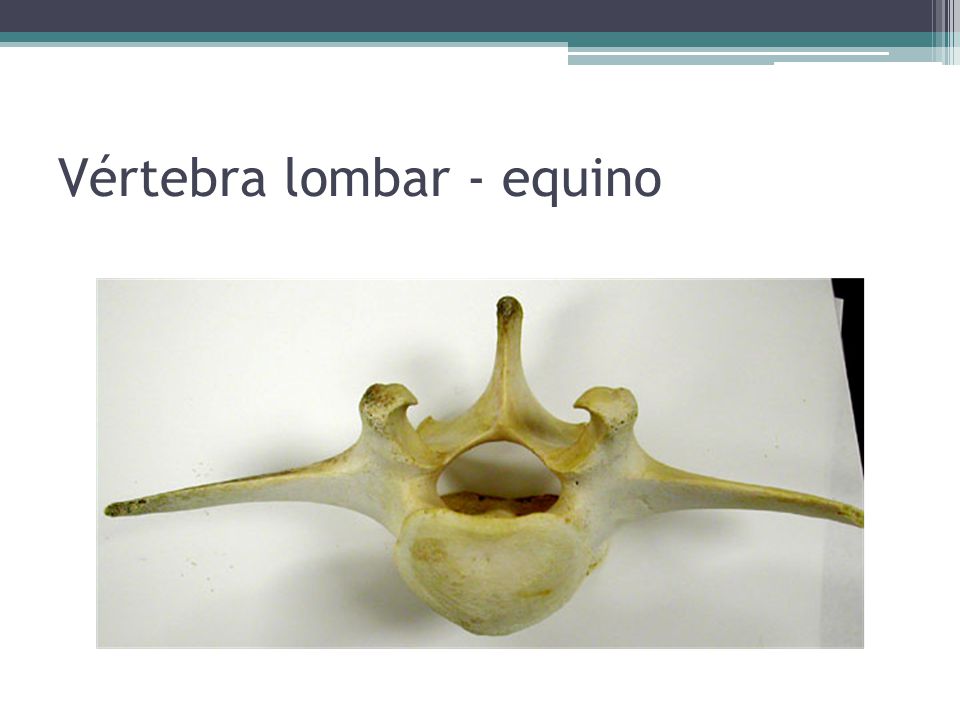 It is known that more reliable results of surgical intervention performed for vertebral fusion can be obtained in the presence of intervertebral disc collapse and endplate erosion than in the presence of the above symptoms.
It is known that more reliable results of surgical intervention performed for vertebral fusion can be obtained in the presence of intervertebral disc collapse and endplate erosion than in the presence of the above symptoms.
In addition to MRI data indicating degeneration of the intervertebral disc, there are certain symptoms that occur with osteochondrosis.
A typical patient with osteochondrosis of intervertebral discs is, as a rule, a healthy person aged 30-40, leading an active lifestyle.
Pain in osteochondrosis is short-term and mild. If for a long time the patient is worried about severe pain, you should think about another reason. Pain in osteochondrosis of intervertebral discs is associated with physical activity, characterized by an episodic increase with a subsequent decrease in intensity or complete disappearance.
Diseases of dwarf breeds – Veterinary clinic “RuVet”, St. Petersburg
Violation of the change of teeth.
Very often, pet owners are faced with such a problem as a violation of the change of milk teeth in dogs or false polyodontics. This pathology is associated with the small size of the jaw, small gaps between the teeth and genetic predisposition. It is most often found in dwarf breeds: Yorkshire Terrier, Chihuahua, Toy Terrier, Dachshund, Spitz, etc.
Normally, the change of milk teeth to molars begins at the age of 3-4 months and should completely end by 6-7 months of age.
If they are not removed in time, the bite will first be broken, then the multiple teeth will complicate the cleaning of the teeth. As a result, plaque, and then tartar, will gradually begin to destroy not only the teeth, but also the gums. Heavy dental deposits and tartar are formed due to food debris that lingers between the teeth. Let me remind you that in addition to the stone that is on the surface of the teeth, the dog also grows a stone under the gums. It is invisible to the human eye, but irritates the gums, promotes the growth of bacteria and is one of the main causes of periodontal inflammation.
Clinically, periodontal disease manifests itself in the form of bad breath, exposure of the necks of the teeth and their excessive mobility, which sooner or later leads to the loss of teeth. As well as tartar, periodontal disease is associated with genetically determined disorders of salt metabolism. Let me remind you that it is necessary to remove tartar regularly. Today this can be done in a veterinary clinic using ultrasound.
Atlantoaxial instability Atlantoaxial instability is a congenital pathology of the spinal column in dwarf dog breeds, which is characterized by the displacement of the first cervical vertebra (atlas) relative to the second (epistrophy)
Atlantoaxial joint provides rotation of the skull.In this case, the first cervical vertebra rotates around the odontoid process of the second cervical vertebra. There is no intervertebral disc between the first and second cervical vertebrae, therefore the interaction between these vertebrae is carried out mainly due to the ligamentous apparatus.
Pathology is more common in young dwarf dogs (Yorkshire terriers, Chihuahuas and miniature poodles). However, the age range of its manifestation can vary.
Atlantoaxial instability develops in dogs in which the odontoid process is absent or underdeveloped, as well as with its fracture and with rupture of the ligamentous apparatus.Underdevelopment occurs in 46% of cases, rupture of the ligamentous apparatus – in 24%. These anomalies are congenital, but trauma to this area can force the appearance of clinical symptoms of the disease.
The main clinical signs include: 1) Acute pain symptom, which is manifested by a loud screeching of an animal when turning or lifting the head; 2) ventroflexion – forced position of the head and neck not above the level of the withers; 3) proprioceptive deficiency of the thoracic limbs; 4) tetraparesis / tetraplegia.Symptoms of brain damage are also noted, which may be a consequence of impaired circulation of cerebrospinal fluid and the development or progression of hydrocephalus, which is sometimes accompanied by syringohydromyelia.
Another potential explanation for forebrain symptoms in dogs with atlantoaxial instability is hepatic encephalopathy associated with portosystemic shunts. This pathology is noted in two out of six dogs operated on for atlantoaxial instability.
Compression of the basilar artery by the odontoid process can cause symptoms such as disorientation, behavioral changes, and vestibular deficits.
The diagnosis of “atlantoaxial instability” is established by the results of a lateral X-ray examination of the cervical spine of the PS. In some cases, it may be necessary to slightly (!) Bend the neck of the animal in order to see the deviation from the axis.
Myelography is not required for diagnosis. In addition, the introduction of a contrast agent into the cerebellar cistern can cause death. If, after plain radiography, doubts remain about the correctness of the diagnosis, it is recommended to perform contrast spondylography of the cervical spine through a lumbar puncture.
By means of CT or MRI of the cervical spine, PS differentiate the disease from disc herniation, discospondylitis, tumors of the PS and spinal cord, and also obtain more complete information about spinal cord edema, myelomalacia or syringohydromyelia.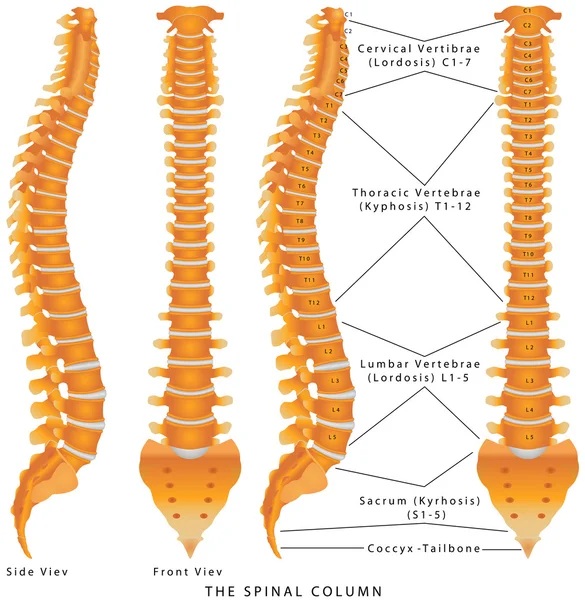
Priority in the treatment of atlantoaxial instability is given to the operative method, although success with conservative therapy is possible.
Dislocation of the patella.
Dislocation (subluxation) of the patella (patella) – displacement of the patella relative to its normal position in the femoral block.
Most dislocations of patella are considered congenital, although some may be associated with trauma or bruising. The dislocation may not manifest itself at first, but if the dog is born with abnormalities in the thigh and lower leg, it is only a matter of time before the kneecap moves away from its normal position. Most often, medial congenital dislocation of the patella is observed. But the lateral congenital dislocation causes more serious motor and support disorders of the pelvic limb.
The patella can be displaced either to the inside of the hind limb, this is called medial displacement, or to the outside, this is lateral displacement. These are the two types of kneecap displacement. Dislocation in 75-80% of cases occurs in the medial direction, in 15-20% there is a dislocation of the patella of both hind limbs.
Dislocation in 75-80% of cases occurs in the medial direction, in 15-20% there is a dislocation of the patella of both hind limbs.
Now let’s look at the severity of the severity of the patella displacement:
First degree
Periodic displacement of the patella can at times provoke mild lameness in the dog.The patella, or patella, can easily shift from its normal position into the block groove, especially when the dog’s leg is relaxed. Patella periodically returns to its normal position. At the same time, there is no crunching (i.e., there is no obvious friction of the patella on the surface of the hip bone), thus, the condition of the knee joint is satisfactory at the time of the study. Medial or lateral (which is less common) deviation of the leg bone is minimal, there is only a slight rotation of the femur bone.
Second degree
Repeated displacement of the patella occurs, which in some cases becomes almost constant. The dog does not step on the leg periodically.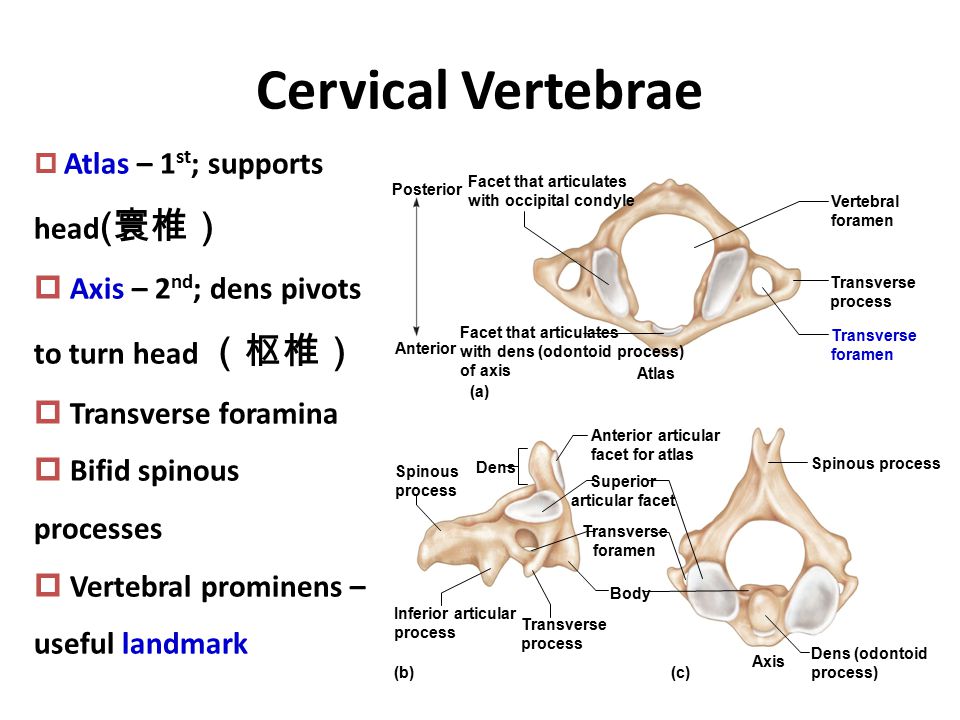 In such cases, turning the tibia manually to the outside of the thigh, usually under anesthesia, may help to reduce the degree of displacement. In other words, if you manually rotate the tibia back to its normal position, the patella should snap into place. But if later the position of the tibia changes, the patella will move medially from its normal position.
In such cases, turning the tibia manually to the outside of the thigh, usually under anesthesia, may help to reduce the degree of displacement. In other words, if you manually rotate the tibia back to its normal position, the patella should snap into place. But if later the position of the tibia changes, the patella will move medially from its normal position.
For this degree of patellar displacement, medial tibia rotation is no more than 30 degrees, and there may be a slight medial hip joint deviation. While the patella is displaced medially, the tibia joint rotates slightly outward. If this phenomenon affects the joints of both hind legs, the main load is transferred to the front legs of the dog.
Many dogs with grade II patella displacement do well for many years, but persistent medial displacement of the patella within the knee groove causes the patella to rub against the crests of the bone and erode the surface of the patella and bone.
The result is a crunch that is amplified by attempting to manually return the patella or by rubbing the surfaces of the patella and hip crest while walking. This can cause irreversible changes in the joint after several years.
This can cause irreversible changes in the joint after several years.
Third degree
Patella is constantly in an offset position, and the rotation of the hip and the deviation of the crest of the bone from the vertical line is from 30 to 50 degrees. That is, the hip crest is located incorrectly and is displaced even more than in the second degree.Although the displacement of the patella is constant at this degree, dogs often continue to step on the foot, but most of the time they spare it and keep it in a bent position. The joint below the knee is no longer in a vertical plane, but moves to the right or left of its normal position. In this case, the groove formed by the ridges of the bones becomes very narrow and almost flat.
Fourth degree.
This is the most severe degree of patellar displacement, with the patella being permanently displaced.The hip bone is turned inward, while the joint and bone can deviate from the vertical plane from 50 to 90 degrees. In this case, the patella lies just above the knee joint, on the inner side of the thigh, and can be detected by palpation. The groove in the hip crest, where the patella should be, is empty or, on the contrary, protrudes, filling with bone substance. The dog is very lame and practically does not step on the sore leg.
The groove in the hip crest, where the patella should be, is empty or, on the contrary, protrudes, filling with bone substance. The dog is very lame and practically does not step on the sore leg.
X-ray examination of the hip and knee joint is the most informative method for a complete diagnosis of the condition and severity of the disease in dogs.
Conservative treatment is possible if patellar instability is not associated with any clinical symptoms, or if lameness is infrequent. If the primary dislocation causes repeated or persistent clinical symptoms, surgery is indicated.
Collapse of the trachea.
The trachea is a cartilaginous tubular organ, part of the airways. It connects the larynx and bronchi. The trachea can be conditionally divided into the cervical and thoracic parts.
Tracheal collapse is a chronic disease associated with congenital anatomical deformity of the trachea.The disease can manifest itself at any age, but, as a rule, the clinical picture develops in dogs of an average age group.
Tracheal collapse should be differentiated from tracheal prolapse. In this case, we are talking about the weakness of the muscular membrane of the trachea as a result of the loss of its tone, elasticity. This disease is more often acquired and occurs in older animals of small breeds. The clinical presentation, diagnosis and treatment of tracheal prolapse is similar to that of collapse.
A slight degree of tracheal deformity may not cause any symptoms in an animal for a long time and may be detected purely by chance on an x-ray. A more severe form of this disease can manifest itself at a young age. The main symptom is a periodic loud cough, which can occur and intensify with excitement, pulling the leash, local irritation of the tracheal region. In severe cases, there are attacks of suffocation, fainting. Comorbidities such as obesity, heart failure, and inflammatory diseases of the upper respiratory tract increase the likelihood of symptoms of tracheal collapse.When symptoms appear, the disease usually progresses over time.
If tracheal collapse is suspected, an x-ray is performed. On the roentgenogram, deformation of the trachea and a change in the diameter of its lumen are revealed throughout the organ or in some part of it. More objective information can be given by tracheo- / bronchoscopy, this procedure is performed under anesthesia.
Treatment can be medical or surgical. Surgical treatment is carried out only when medical treatment is ineffective, and the collapse seriously impairs the quality of life of the animal or poses a mortal danger.There are several ways to treat tracheal collapse surgically. Their meaning boils down to the fact that a special implant is installed, which is a frame for the trachea, restoring its necessary properties – strength and the ability not to lose its shape during inhalation or exhalation. On the one hand, surgical treatment is a radical solution to the problem, on the other, it is fraught with complications such as implant rejection, infections, laryngeal paralysis and tracheal necrosis.
Portosystemic shunt
A portosystemic shunt is an abnormal vessel that connects the hepatic portal vein to the caudal vena cava.
Extrahepatic shunts are common in small dog breeds and are more common in purebred dogs. The risk group includes miniature schnauzers and Yorkshire terriers.
Due to the presence of this abnormal vessel, blood flowing from the intestines, rich in ammonia and other toxic metabolic products, bypassing the liver (where it is cleared of toxic substances), immediately enters the heart and then is released into the general bloodstream. Normally, all the blood flowing from the intestines should go to the liver for detoxification and cleansing of toxic metabolic products.Ammonia-rich blood flows to the brain, resulting in neurological damage. The clinical picture of this pathology is various disorders on the part of the central nervous system: depression, lethargy, seizures, refusal to feed, in severe cases – a coma. Clinically, this pathology can manifest itself at any age. It all depends on the size of the abnormal vessel: the larger the diameter of the abnormal anastomosis, the greater the volume of blood, the liver bypasses, and immediately enters the general bloodstream.The liver, not receiving the flow of venous blood from the intestine, gradually atrophies.
It all depends on the size of the abnormal vessel: the larger the diameter of the abnormal anastomosis, the greater the volume of blood, the liver bypasses, and immediately enters the general bloodstream.The liver, not receiving the flow of venous blood from the intestine, gradually atrophies.
To diagnose portisystem shunts, we use an approach involving clinical, laboratory and instrumental research methods.
When conducting studies of a clinical blood test, pronounced changes are usually absent.
The study of urine indicate, as a rule, urolithiasis with the formation of calculi from uric acid ammonium.
Ultrasound examination allows, in addition to the size of the organ, to assess the state of portal strokes and to visualize some intrahepatic shunts.
Contrast radiography (mesenteric portography) is the most accurate and understandable method for determining all types of shunts, their number and exact anatomical position.
There is conservative therapy and graft ligation surgery to restore portal blood flow.
Perthes disease
Perthes disease (Legg-Calve-Perthes disease, osteochondropathy of the femoral head, aseptic necrosis of the femoral head) is a disease of small and dwarf dog breeds (Yorkshire Terriers, Toy Terriers, Chihuahuas, Dwarf Poodles and Chinese Crested Dogs).The sex of the dog does not matter.
Until now, the reasons for the formation of this disease remain unclear. In most cases, Legg-Perthes disease is detected at a puppy age of 4-10 months. in the form of persistent or intermittent lameness. In the most severe cases, there is a complete loss of support on the affected limb.
The disease affects the head of the femur, which enters the acetabulum of the pelvis to form the hip joint. At an early age, isolated structural changes such as non-infectious osteonecrosis of the head and neck of the femur appear.From the head of the bone, the lesion extends to the fossa of the joint. In the future, the dead bone areas are subject to resorption. This leads to a change in the shape of the femoral head – from spherical, it turns into mushroom, flattens.
The head of the bone collapses so badly that the articulation collapses. The more the shape of the femoral head has changed, the more pronounced arthrosis develops. Most often, one limb is affected, and only in 12-16% the disease acquires a bilateral process.
Diagnosis of Perthes disease in dogs involves clinical and instrumental research.The type of lameness in dogs, the muscle mass of the hip joint, and the mobility of the hip joint are clinically evaluated. Instrumental methods are: X-ray of the hip joint, arthroscopy, computed tomography, ultrasound of the hip joint.
Treatment of Perthes disease, conservative and surgical. Conservative assumes the use of anti-inflammatory and chondroprotective therapy, angioprotection. Unfortunately, conservative therapy for Perthes disease is ineffective.The main method is surgical treatment, which consists in removing the altered part of the femur. Surgical treatment is giving good results today.
Hydrocephalus.
Hydrocephalus is a congenital disorder of dwarf dog breeds characterized by an increase in cerebrospinal fluid volume in the ventricles of the brain, which leads to a decrease in the mass of nerve tissue and, as a result, to severe neurological symptoms.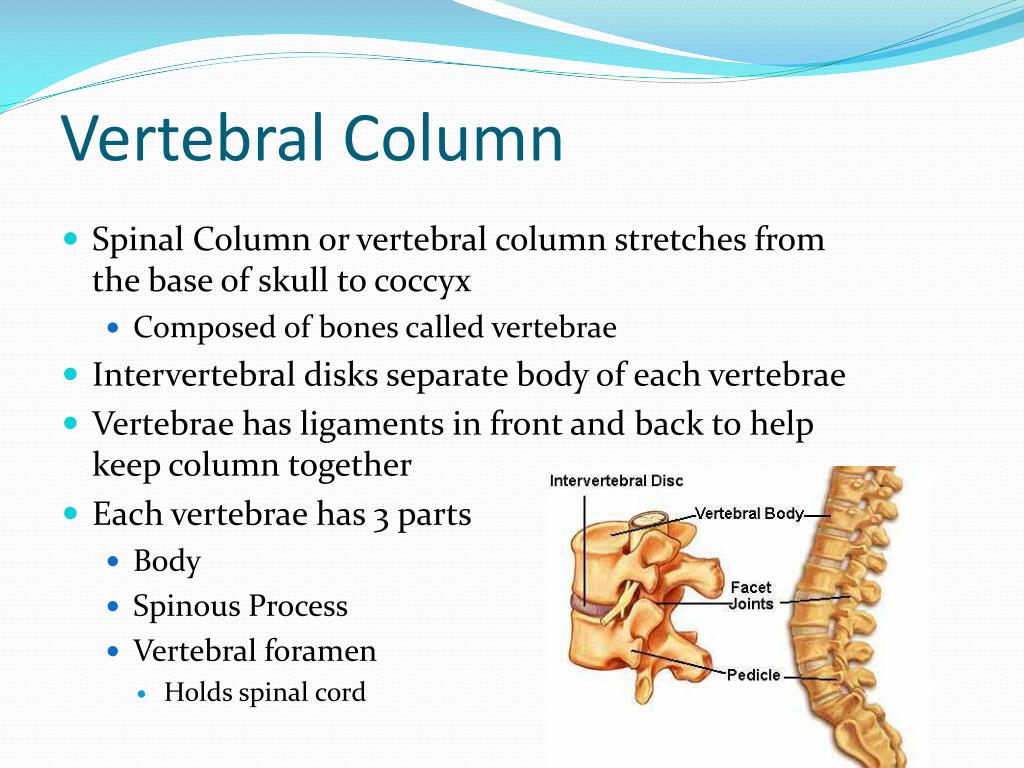
Clinical symptoms can begin to appear from 1.5-2 months of age to the biological old age of the animal, and the clinical manifestation of the disease can begin quite suddenly, and the cause is a little stress.Symptoms often appear during the first months of life, and sometimes even later. At the same time, a normal head circumference and a satisfactory general condition can be combined with rather pronounced atrophic changes in the brain. The later the hydrocephalus develops, the less the size and shape of the skull change. This is due to the closure of the fontanelles and cranial sutures. In this regard, in older animals with hydrocephalus, the leading syndrome is intracranial hypertension.
The external manifestations of the disease include:
– in young animals “bulging” of fontanelles in breeds such as Toy Terrier, Chihuahua (fontanelle openness in some cases is a physiological norm)
– “divergence” of bone sutures
– expansion of the subcutaneous venous network head
– an increase in the size of the cerebral skull
– craniofacial disproportion
– exophthalmos
– sharply protruding frontal and parietal tubercles.
Diagnosis of hydrocephalus is based on typical clinical symptoms, ultrasound imaging and dilated lateral ventricles of the brain, contrast encephalography, computed tomography, or magnetic resonance imaging.
Treatment of progressive hydrocephalus in all cases should begin with conservative methods, and only if they are unsuccessful and in the absence of contraindications, surgical intervention is used.
Hypoglycemia
Hypoglycemia is a condition in the body when blood sugar (glucose) drops to dangerously low levels.This condition is usually the result of glucose utilization or a decrease in its production.
In case of insufficient glucose production, hepatic or endocrine disorders are possible, which can occur due to:
– Addison’s disease or hypoadrenocorticism;
– portosystemic shunt
– death or metabolic disorders in hepatocytes.
An increase in the level of glucose utilization can occur:
– with excessive production of insulin, which has a multifaceted effect on the metabolism in the body, in almost all organs and tissues, or due to the existence of various insulin-like factors;
– with increased doses of glucose consumption;
– with prolonged fasting, which can be one of the causes of hypoglycemia.
And mini pet dogs metabolism is much faster than normal sized dogs. Such animals are very susceptible to lack of calories due to the fact that their growing body requires a lot of energy.
Symptoms appear unexpectedly: the puppy refuses to eat, chills, apathy, indigestion appear. Then muscle weakness, tremors (especially of the facial muscles) develop. In milder cases, the puppy looks weakened, his gait is wobbly and unsure.
At the time of hypoglycemia, the baby should drink concentrated sugar syrup – dilute a tablespoon of sugar in two tablespoons of water, gently unclench the jaws and pour into the mouth from the side, little by little, trying to spill back as little as possible. This must be done even in the presence of seizures, because the body itself spends a very large amount of energy on seizures, and it is necessary to stop them as soon as possible. Then, of course, you will take the puppy to the doctor, where the blood glucose level will be maintained, if necessary, with infusion therapy.
Diagnosis of hypoglycemia is based on clinical symptoms and laboratory results from blood tests. For this, a special device such as a glucometer is used, thanks to which a specialist can quickly and with great accuracy establish the level of glucose concentration in the blood. The norm of glucose in the blood of an animal is considered to be in the range from 3.4 to 6.1 mmol / L
The prognosis for the operative relief of convulsive syndrome is rather favorable, but primarily depends on the nature of the underlying disease.
A complete examination of the animal is mandatory, which is an ultrasound of the internal organs, the study of the corresponding blood tests, the determination of the presence of viral diseases, and more. Only after the correct diagnosis has been established, it is possible to judge the reasons for the decrease in blood sugar in the animal and, accordingly, prescribe the necessary and correct treatment.
90,000 Prof. Dr. Erkan Kaptanoğlu
Spinal tumors
Tumors of the spine usually occur in other parts of the body and reach the spine through blood, lymph, or direct extension; it is rare to see tumors that develop from the bones of the spine themselves.Tumors that develop from the bones of the spine are bone tumors that can occur in other parts of the body. These tumors can be both benign and malignant. Tumors that have spread to the spine from other parts of the body are usually cancerous. Tumors grow towards the spinal canal and cause signs of spinal cord compression. In addition, tumors can affect the vertebrae, leading to collapse and fracture of the vertebrae.
Detailed patient records are needed to make a decision on the treatment of a patient with a spinal tumor.An examination of the patient and a detailed X-ray examination are mandatory. Treatment planning can be carried out accurately if the tumor type is determined in advance using a biopsy.
The biopsy is usually performed under general anesthesia and in the operating room. Pathological examination of the type of tumor is carried out by taking material from the tumor.
Results obtained
- Pain in the spine caused by broken bone.
- Collapse of the vertebrae due to a tumor may cause symptoms of nerve compression.
- Pain and numbness extends to the arms and legs due to spinal cord compression.
- Weakness in arms and legs due to compression of the spinal cord.
- Disorder of the bladder or defecation due to compression of the spinal cord.
- Difficulty walking.
Reasons
- Direct tumor spread elsewhere in the body to the spine.
- Spread of a removed tumor in the body through the blood or lymph.
- Growth of tumors of the spinal canal.
- Tumors developing from the bones of the spine.
Potential Treatment Options
Non-surgical treatments: Medication and radiation therapy may be required in some cases.
Surgical treatment often requires removal of the tumor and the affected area of the bone. When the tumor is removed, a metal mesh or cement is placed in its place to support the spine.If the tumor spreads and enters the canal and puts pressure on the spinal cord, the part that surrounds the spinal cord, called the lamina, is surgically removed. Meanwhile, if the joints of the spine are also removed, the spine is fixed with screw and rod systems. Depending on the location of the tumor, an opening of the chest and abdomen may be required.
Tracking
Malignant tumor patients should be carefully monitored for recurrence.In addition, patients should be closely monitored for fixed screws and rods.
Diseases of neurosurgery | NP
WHAT WE TREAT IN NEUROSURGERY
HEAD INJURIES
Head trauma is a common occurrence in emergency departments. Every year, about 300 out of 100,000 patients are admitted to the hospital due to head trauma, every nine out of 100,000.patients die. According to statistics, 5.5-6 thousand people die annually for this reason in Turkey.
EPIDURAL HEMATOMA
Skull fractures causing ruptures in the middle meningeal vessels often cause temporary or temporoparietal epidural hematoma. Sometimes it develops as a result of trauma to the sagittal and transverse sinuses.
SUBDURAL HEMATOMA
In some patients, bridging veins on the surface of a ruptured cerebral cortex as a result of an impact cause a subdural hematoma.
BREAKING CRACK
Formed as a result of a sharp blow without loss of consciousness. With a closed collapse fracture, no damage is formed on the scalp, therefore there is no risk of infection. Closed collapse fractures that violate the integrity of the bone are sent for surgery for aesthetic correction. Open wounds with ruptured dura mater can cause serious complications such as meningitis, brain abscess.
CHRONIC SUBDURAL HEMATOMA
Chronic subdural hematoma is common in children and the elderly. The most common cause is a minor or long-standing trauma that the patient can remember. Cerebral atrophy, low CSF pressure, alcoholism, coagulation disorders, contribute to the formation of dehydration in children.
SPINE TUMORS
According to statistics, intracranial spinal tumors are found in each of 6-9 adults and in each of ten children.
Tumors of the spine are divided into three groups: extradural, intradural extramedullary, intradural intramedullary. Most extradural tumors in adults are metastatic. Intradural intramedullary tumors are common in children, causing symptoms such as pain, loss of strength, loss of sensation, reduction / loss of deep tendon reflexes.
On direct radiographs of the vertebrae, pathological collapse of a vertebral body fracture, an increase in the intervertebral foramen, an increase in the density of paravertebral soft tissues, indirect signs of a spinal tumor.MRI is gradually replacing other methods of examination in the diagnosis of spinal tumors.
OTHER DISEASES OF THE SPINE
Herniated disc
This is the definition given to all painful conditions caused by the displacement of a disc called between the vertebrae of the lumbar region in the direction of the canal where the nerves and the spinal cord pass. Lumbar disc disease is in the fields of physiotherapy and rehabilitation, neurosurgery and algology.
Cervical hernia
Similar mechanisms and problems in a hernia are also valid throughout the neck. The wear on the discs between the cervical vertebrae can cause severe pressure on the nerves that run from the spinal cord and neck to the arms, eventually transferring to the hernia to the spinal canal. For this reason, problems such as neck pain, frequent stiffness, dizziness and brief bouts of darkening of the eyes, pain in the arm, numbness, tingling, loss of strength and incompetence in the hands are encountered.Since the spinal cord that runs through the neck is a reference line for the whole body, compression of the spinal cord can also present additional problems such as loss of strength in the arms and legs, imbalance, difficulty walking, and urinary incontinence.
When surgery is not required, drug therapy, protection, weight control, neck exercises, use of a cervical collar, and physical therapy programs are important, while microsurgical techniques are safe and effective.
Modern methods of treatment have made hernias of the waist and neck uncomfortable. In contrast, where appropriate, patient comfort has reached a satisfactory level with modern endoscopic discectomy or microsurgery techniques.
SPINE INJURIES
Fractures of the spine often occur during accidents, falls from a height, accidents at work.
Doctors first determine the location and degree of the fracture.Treatment planning is done accordingly.
Neck and back fractures can create spinal pressure. In this case, urgent surgery is needed to prevent strokes. For such injuries, prompt diagnosis and early intervention are important.
SPINE TUMORS
The most outstanding treatment is surgery to remove the tumor. It is a very sensitive operation and advanced technology is used.Intraoperative monitoring (continuous measurement of spinal function during surgery) is necessary, especially when spinal tumors shrink or reshape the spinal cord. In addition, the possibility of intraoperative MRI technology is important (examination of the surgical area using MRI during surgery)
WHAT IS SCOLIOSIS?
Scoliosis is a lateral curvature of the spine that occurs mainly in the thoracic and / or lumbar regions.Scoliosis can occur alone or with kyphosis (humpback; abnormal curvature from back to front) (Kyphoscoliosis). The vertebrae (the bones that form the spine), which lie flat from top to bottom in a normal spine, rotate to the right, left, and / or around their axes in the spine in scoliosis.
Scoliosis is much more common in girls. Especially scoliosis exceeding 30 degrees is observed in young girls ten times more often than in boys. Scoliosis occurs in approximately 1.5 million patients in Turkey.
LOMBER NARROW CHANNEL
Secondary contraction of the lumbar spine due to congenital facet joint hypertrophy. In neurogenic lameness, symptoms and signs such as pain, sensory loss, and muscle weakness along the nerve trace occur after the patient is on the legs. Unlike a herniated disc, sciatic nerve stretch tests are negative.
SPONDYLOLYSTESIS
Spondylolisthesis is a vertebral body (usually L4 or L5) moving forward along the main vertebra.Slip is caused by joint failure (congenital or degenerative) or plate fracture. It usually progresses without symptoms. However, narrowing of the spinal canal in late cases can cause symptoms and signs of root compression.
SPINAL INJURY
Approximately 2/100 000 of the population are admitted to hospital each year for spinal injuries. If fractures or displacements caused by trauma to the upper cervix (C1-4) result in a complete incision of the spinal cord, it is life-threatening due to sudden respiratory arrest due to the diaphragm and paralysis of the intercostal muscles.Spastic quadriparesis with incomplete damage to the medulla oblongata in this region
Congenital anomalies
HYDROCEPHALY :
Hydrocephalus is defined as an increase in the amount of CSF (cerebrospinal fluid). Often due to decreased absorption, it rarely develops as a result of excessive secretion. Blocking CSF flow or decreased absorption results in ventricular dilation.
The main signs of hydrocephalus are the fact that the head circumference in infants and young children is greater than normal values, the anterior fontanelle is stretched and widely palpated, retraction of the upper eyelid, paralysis of the ascending gaze, scalp veins become evident, impaired consciousness, vomiting in the stream, hydrocephalus …In slowly progressive cases, mental retardation and developmental delays may be the first results.
Symptoms and signs differ in young people and adults due to the fixed size of the skull. Lethargy, gait disturbance, urinary incontinence with slowly progressive hydrocephalus are classic results. In these patients, CSF pressure may be normal (normal pressure hydrocephalus).
DİASTOMATOMYEL
The spinal cord is usually congenitally divided into two parts in the lower thoracic and lumbar segments.Usually, the protrusion of the bone or cartilage runs anteroposteriorly between the two spinal cords. In most cases, medullaris is lower than the normal anatomical location of “tense umbilical cord syndrome”. Since the development of the spinal column is faster than the development of the spinal cord, spinal cord sprains can lead to back and lower back pain and neurological symptoms.
KRANİYOSİNOSTOZİS
The cranial bone suture allows the skull to expand as the brain develops during normal child development.Early closure of one or more cranial sutures eliminates the possibility of suture enlargement. In normal developing sutures, excess development occurs to compensate for a different location. As a result, deformities of the skull occur, in advanced cases, the development of the brain is prevented. Compression of the KIBAS and optic nerve occurs. Sagittal synostosis is the most common type (50%).
Diseases of peripheral nerves
CARPAL TUNNEL SYNDROME
The median nerve is sandwiched between the transverse wrist ligament and the wrist tendons.Carpal tunnel syndrome (CTS) is more common in women and diabetics. Any pathology that causes an increase in the volume of connective tissue can lead to CTS; such as rheumatoid arthritis, acromegaly, hypothyroidism, amyload, pregnancy, overweight. The first symptoms are pain in the arm and forearm, numbness in the arm. The pain is worse at night and during work. In advanced cases, there may be loss of sensation in the middle arm, loss of strength and dissolution in the muscles.ENMG helps with diagnostics.
ULNARY RYHRAL SYNDROME (Cubital Tunnel Syndrome)
The ulnar nerve may be clamped between two muscle heads at the starting point of the ulnar tunnel at the elbow. The first symptoms are pain in the forearm and arm. In advanced cases, there may be a loss of sensitivity in the ulnar region of the hand, melting of the hand muscles and deformation of the claw hand.
CLUB REMOVAL :
Removal of a clot, caused by the accumulation of fat in the major vessels that feed the brain and heart, causes a paralysis called a “stroke” in humans.
Stating that hypertension and uncontrolled diabetes are some of the most important factors in removing a clot, experts warn: “Cardiac monitoring should be neglected, as well as a healthy diet, exercise, and abdominal fat reduction.
What diseases of the spine exist?
When we talk about diseases of the spine, we are faced with a wide range of diseases.The spine can be considered the longest moving unit in our body. When viewed as a unit, the spine is the largest bone structure in our body. Therefore, it can be affected by many diseases. Diseases of the spine are studied according to the main headings, such as infections, tumors of the spine, traumatic fractures of the spine, congenital curvature of the spine, replacement of the spine with aging, degeneration. Diseases of the spine are not considered in one disease, they are all controlled by divisions
Treatment of orthostatic collapse – all methods of treatment
Neurologists of Moscow – latest reviews
I knew that I was not going to a regular neurologist, but to a chiropractor / osteopath.But in addition to the treatment typical for this profile of the doctor, she received a very unusual treatment. Needles were supplied. And most of the questions were raised by the way of selecting drugs and determining the dosage, by applying drugs in plastic bags to the body, pronouncing from possible dosages aloud and determining ‘what the body responds to’. Well, plus most of the doctor’s actions were for an additional fee, which he did not warn about at the reception, and the price tag ended up being significant.
Anonymous,
August 12, 2021
At the reception, the doctor asked me about my problem, explained what the reasons were, prescribed tests and pre-prescribed treatment and medications.I will go again after receiving the tests. The doctor explains everything intelligibly, pleasant impressions remained after the reception.
Peter,
August 11, 2021
A professional in his field.The doctor identified the cause of my pain and prescribed treatment. I also did an ultrasound there very high quality, immediately identified the problem. I am very pleased. I would recommend a doctor to my friends.
Elvira,
05 August 2021
The doctor examined, gave recommendations, prescribed medication and physiotherapy exercises.Everything was great. Thank you! Very pleased. In a month we will turn to this doctor again. Would recommend it.
Alina,
July 29, 2021
They called the doctor at home.I cannot do everything that Marina Yurievna prescribed from the medicines, since there is no one to give injections. As a specialist and a person, she is polite. attentive, everyone
explained clearly.
Sergei,
July 26, 2021
The doctor is good, polite, kind and pleasant.Anna Eduardovna prescribed an ultrasound scan and treatment for me. I will come to the doctor for an appointment because I really liked it.
Irina,
09 July 2021
The doctor listened carefully to everything and gave recommendations, a referral for another examination.As a neurologist, she also gave recommendations on other diseases: what to drink, what to pierce. Professional doctor! She is interested in the person getting well.
Valentine,
03 June 2021
I liked the doctor very much, it became so calm with her.She spent almost two hours on me, examining everything. I’ll be back again.
Maria,
March 30, 2021
Evgeny Yurievich is a very calm, attentive, calm and positive doctor.He advised me, listened to complaints and reviewed the documents provided. The doctor also offered me several treatment options to choose from. I was satisfied!
Hope,
17 March 2021
The doctor consulted me and answered all my questions.I will go to her for a second appointment.
Yana,
February 22, 2021
Show 10 reviews from 15,350 90,000 Hemangioma of the spine | Artromedicenter
Hemangioma of the spine is a benign tumor that develops in the vertebral body.Basically, this formation is localized in the lower thoracic or upper lumbar vertebral regions. Often, hemangioma develops in a single vertebra. The incidence of such a tumor in the population is about 10%. As a rule, hemangioma is detected unpredictably, there are no pronounced symptoms of its development. A benign tumor is more often detected in adulthood than in childhood. Such formations are considered to be venous malformations of the vertebral bodies.
Main causes
What are the exact reasons for the occurrence of such a disease – scientists cannot say.One of the possible reasons for this is a genetic predisposition. Many studies have been carried out in order to identify the direct causes of the occurrence of hemangiomas.
Some scientists, based on the results of verified examinations, refer to the likelihood of local tissue hypoxia, while others believe that the main role is played by a high level of estrogen. Probably because of this, hemangiomas appear more often in the female half of the population.
As stated earlier, hemangioma often develops without symptoms.Based on the data of pathological studies, the tumor occurs in 10-12% of cases, and does not make itself felt throughout life. However, people can feel pain.
The reason for this is the large size of the hemangioma, including the entire size of the vertebra. With a tumor, pronounced collapse of the vertebra is likely. With this phenomenon, compression of a number of nerve structures occurs. The patient may have a predominance of:
- sensation of pain;
- slight weakness in the legs and arms.
In addition, there is a possibility of disruption of the urinary and digestive systems.
Rarely, a hemangioma can creep out beyond the vertebra border and this will be a consequence of pain. In addition, a large tumor can cause a vertebral compression fracture. The reason for this is physical stress on its thinned surface. The feeling of pain with hemangioma can occur in women who are in position. The reason for this is the increased stress on the spine.
Symptoms
In most cases, primary formation is detected in the thoracic and lumbar spine. The set of symptoms will depend on where the tumor is located. As a rule, hemangioma affects the vertebral body. However, sometimes nearby muscles also suffer from it. A benign tumor often occurs in people in the 30 to 50 age range.
This type of tumor, like hemangioma, has a minimal set of symptoms.It is detected during a medical examination of the spine due to another disease. Signs of education are not specific. Their manifestation depends on the size and nature of the tumor.
Hemangioma occurs in people over 40 years of age. Previously insignificant vertebral injuries can be seen in their anamnesis.
In the presence of a tumor growth in the spinal canal, there is a risk of nerve compression. In this case, the patient will feel pain along with numbness. There may also be a malfunction in the activity of the organ innervated by the compressed nerve.
Similar signs can be observed with large hemangiomas, or vascular disorders with the girth of the entire vertebra.
It is possible to diagnose a benign tumor thanks to MRI. With the help of radiography, it is allowed to consider how damaged the vertebra and the segment of its reduction.
Treatment method
Treatment options may vary depending on the severity of symptoms. The doctor may order an MRI scan to monitor the hemangioma. In severe cases, surgical resection is recommended.
At the initial detection of a tumor, patients need to be attentive to their health. Thus, it is recommended to do systematic examinations to establish the diagnosis of compression fractures. With the help of diagnostic methods, it is also possible to identify neurological dysfunctions.
In the presence of pain and other signs due to hemorrhage, therapy will be selected in accordance with the degree of bleeding and the aggressiveness of the symptoms. Treatment is also carried out based on the size of the tumor and its location.
Embolization is considered one of the most acceptable treatment methods. During this procedure, a small catheter is inserted into the body of the hemangioma, then polyvinyl alcohol is injected. After this material enters the bleeding site, the blood stops due to the formation of an embolus.
The most famous therapeutic method for hemangiomas is radiation therapy. Under the action of X-rays, the death of hemangioma cells occurs. According to research, it became clear that increased doses of radiation therapy lead to a halt in the growth of education and relieve pain.
Surgical intervention
In the case of spinal cord compression, in which the patient has pain and impaired motor activity, doctors recommend an operative method to eliminate the tumor. If the hemangioma is not completely removed, it is required to use radiation therapy as an additional method of treatment.
Surgical therapy is also used due to the exposure of children to harmful radioactive substances.
Pain in the spine with a tumor and symptoms of a neurological nature require immediate treatment.With an active increase in symptoms, an early surgical intervention may be needed. With weak signs of hemangioma, radiation therapy or embolization is more often used.
Early diagnosis and treatment of benign spinal tumors is required to prevent adverse events.
Complex treatment
What treatment of the spine to apply in this or that case – the doctor must decide, based on the results of the patient’s examinations. The tumor is treated in such ways as:
- surgical decompression;
- endovascular embolization;
- radiation therapy;
- introduction of pure alcohol or methyl methacrylate.
Today, a new and safe method of hemangioma therapy called transpedicular percutaneous injection of pure alcohol under CT control is used. During treatment, it is required to monitor the patient’s condition. If complications appear, help is required to change the therapy regimen on the recommendation of a doctor.
So, hemangioma can be detected only by medical examination of the spine. After that, the patient is shown medical treatment, selected by an experienced specialist.With timely treatment, modern therapeutic techniques can eliminate the tumor in a short time.
90,000 disease, symptoms, treatment, causes, diagnosis
Orthostatic hypotension – a sharp decrease in blood pressure by 10-15 mm Hg. Usually it is observed with a sharp transition from the horizontal state of the body to the vertical one. The main cause of orthostatic hypotension is the inability of blood vessels to maintain normal blood pressure.As a result, not enough blood flows to the brain, and the person experiences symptoms preceding fainting. With orthostatic hypotension, the blood descends by gravity to the lower extremities.
Reduction of systolic blood pressure by more than 20 mm Hg. is of clinical importance, especially in the presence of signs of light-headedness or fainting. Orthostatic hypotension cannot be considered an independent form. This is a violation of the regulation of blood pressure due to various reasons.
Orthostatic hypotension may result from the loss of water from the body – dehydration. Sometimes seen in patients with anemia. If a person does not tolerate prolonged standing, complains of weakness, nausea and dizziness, this always raises suspicion of orthostatic hypotension.
Orthostatic hypotension requires treatment, which depends on the severity of the disease. Sudden onset orthostatic hypotension may indicate myocardial infarction, arrhythmia, cardiomyopathy, and aortic stenosis.
Diagnostics and treatment of orthostatic hypotension and collapses are carried out by the therapist and the cardiologist together.
Service benefits
Convenient working hours
We work until late in the evening, so that it is convenient for you to take care of your health after work
No Queues
The patient registration system has been debugged over many years of work and operates in such a way that you will be received exactly at the chosen time
Cozy interior
It is important for us that patients feel comfortable within the walls of the clinic, and we have done everything to surround you with coziness
Attention to the patient
At your service – attentive staff who will answer any question and help you navigate
.

 This test may be performed in conjunction with a myelogram of the spine to provide additional information. A myelogram involves a spinal tap where dye is administered near the spinal cord. This diagnostic study is ideal for showing bone detail including narrowing.
This test may be performed in conjunction with a myelogram of the spine to provide additional information. A myelogram involves a spinal tap where dye is administered near the spinal cord. This diagnostic study is ideal for showing bone detail including narrowing.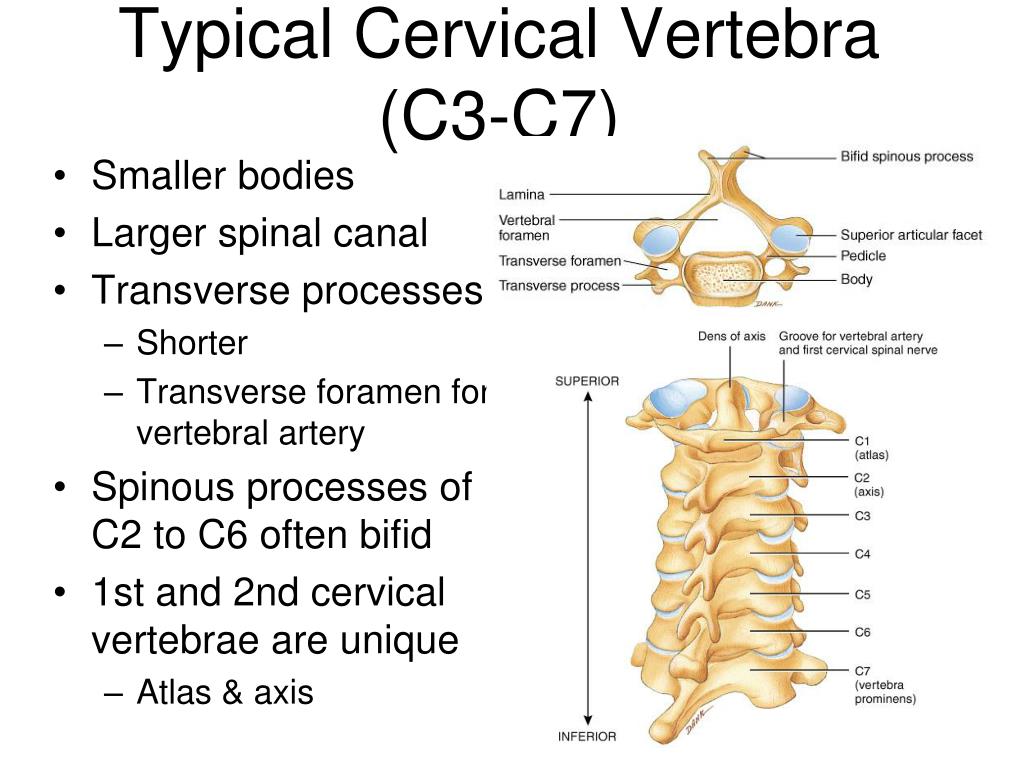 A scan of the spine, hip or the entire body requires less than four minutes.
A scan of the spine, hip or the entire body requires less than four minutes.
 The
The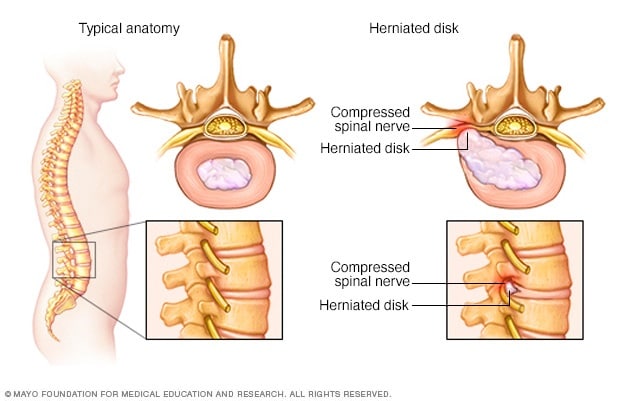
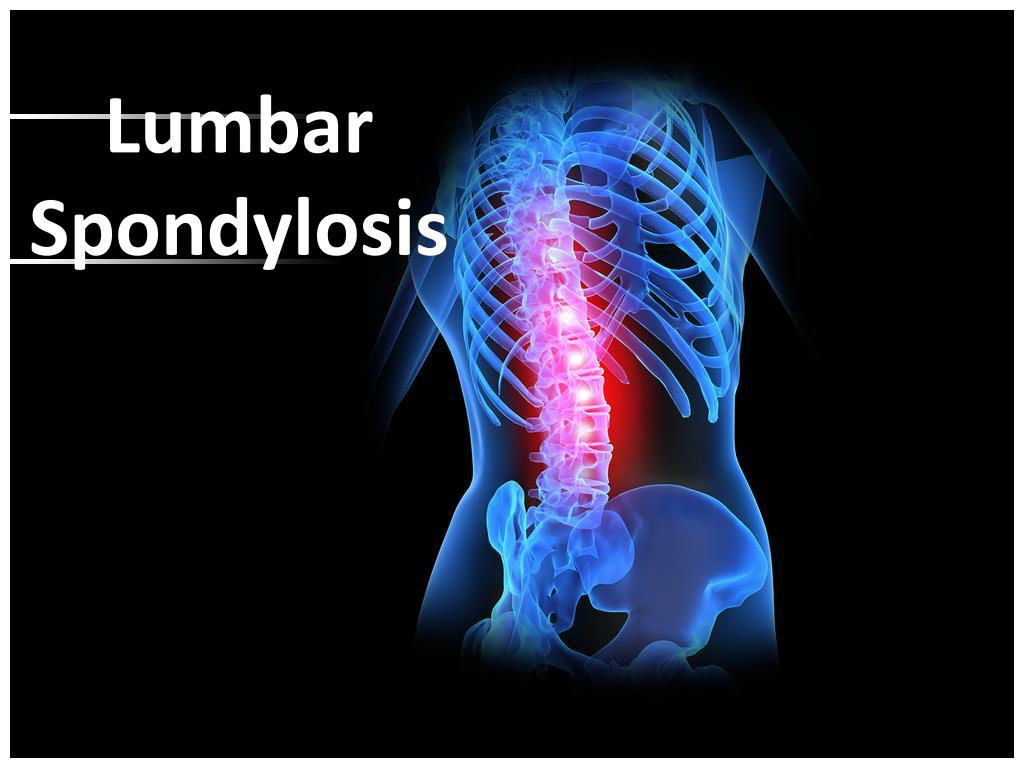

 Usually seen as a curve or “hunchback” shape in the back, termed kyphosis.
Usually seen as a curve or “hunchback” shape in the back, termed kyphosis.

